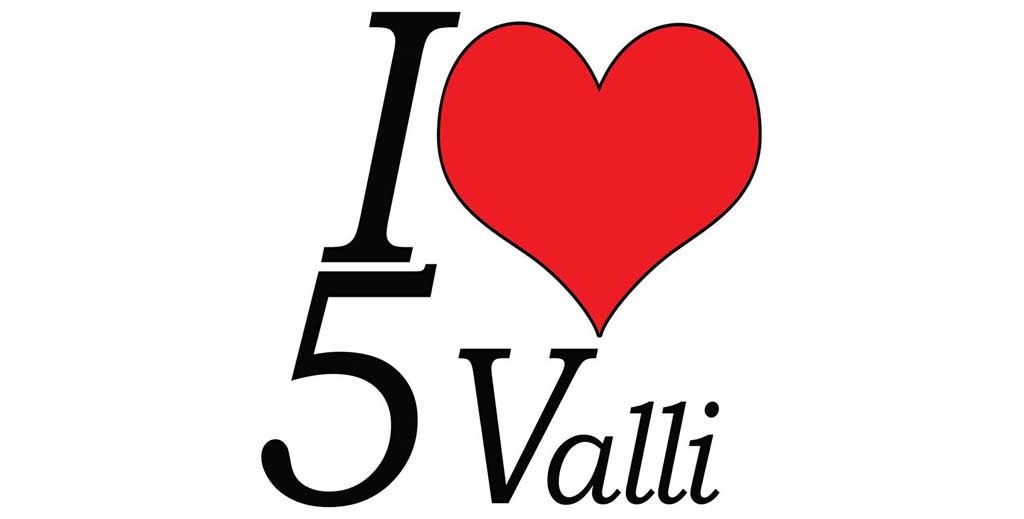TERRA ITALIA Newsletter No 3 | 2023
Dear Readers and Fans of Liguria,
Liguria is getting ready for the winter and festive season. The weather is still pleasantly mild and the overall pace of life is slowing down and increasingly turning festive. With this newsletter we would like to invite you to discover Genova – “The Proud” and often undervalued capital of Liguria. We introduce you to a rich mix of art and culture, shopping and good food. And with Christmas around the corner we tell you about the local traditions and what traditional festive menu Ligurians are likely to enjoy come Christmas day.
For those interested in property we have a selection of new offers we would like to share with you. Why not have a look.
And of course we also welcome all who have already moved into our beautiful region and want to keep exploring new places in our beloved Liguria.
Wishing you a pleasant time of Advent, a happy Christmas and a healthy and prosperous new year.
Kind regards,


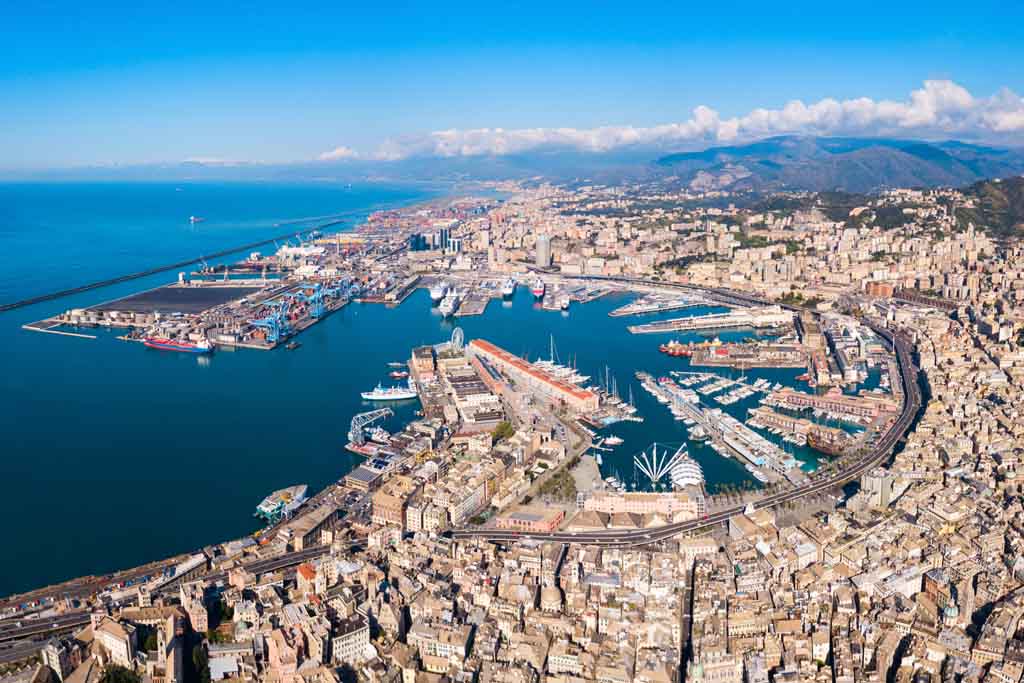
Art, Culture, culinary Delights and a spot of Shopping make for a perfect Travel Destination
In this feature we will take you on a trip to Genova, the capital town on the Riviera connecting western and eastern Liguria. Genova’s roots go back thousands of years of colourful history. The town occupies a picturesque picture perfect location right on the Ligurian sea and has been for centuries one of the most important trading ports on the Mediterranean sea. Today’s Genova is a lively up and coming town with excellent restaurants, exciting shops, interesting cultural events and fascinating sights making it an attractive travel destination all year round.
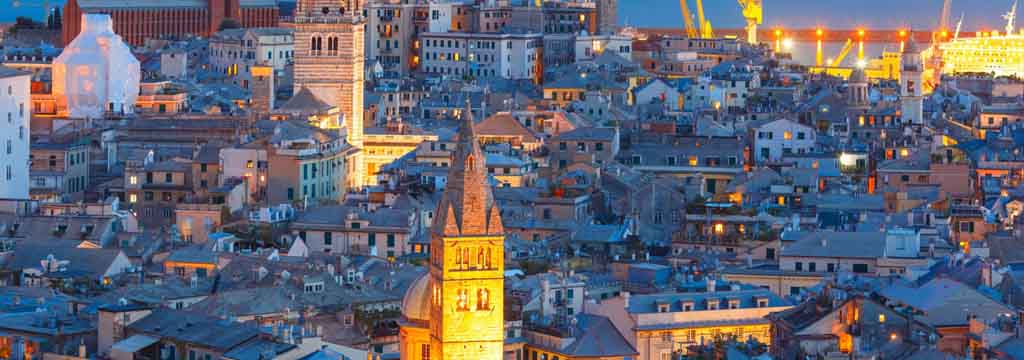
With 610,000 inhabitants and covering an area of 243 qkm Genova is the 6th largest town in Italy. When it comes to history and sights worth visiting it easily competes with other major Italian cities. There are good reasons why it is referred to “La Superba” , the proud. The historic old town of Genova was made a UNESCO world heritage in 2006.
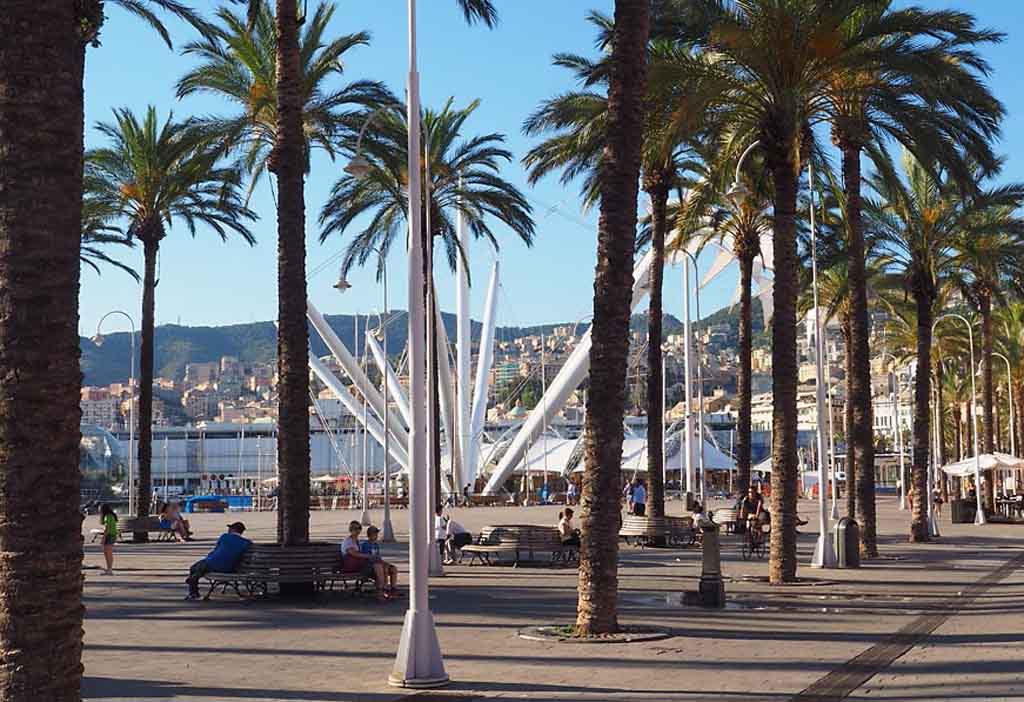
The port has always been of major importance in the history and significance of Genova. Over the centuries it helped bring Genova status and played a vital role in giving direct access to the sea for the industrial triangle Milan, Turin, Genova.
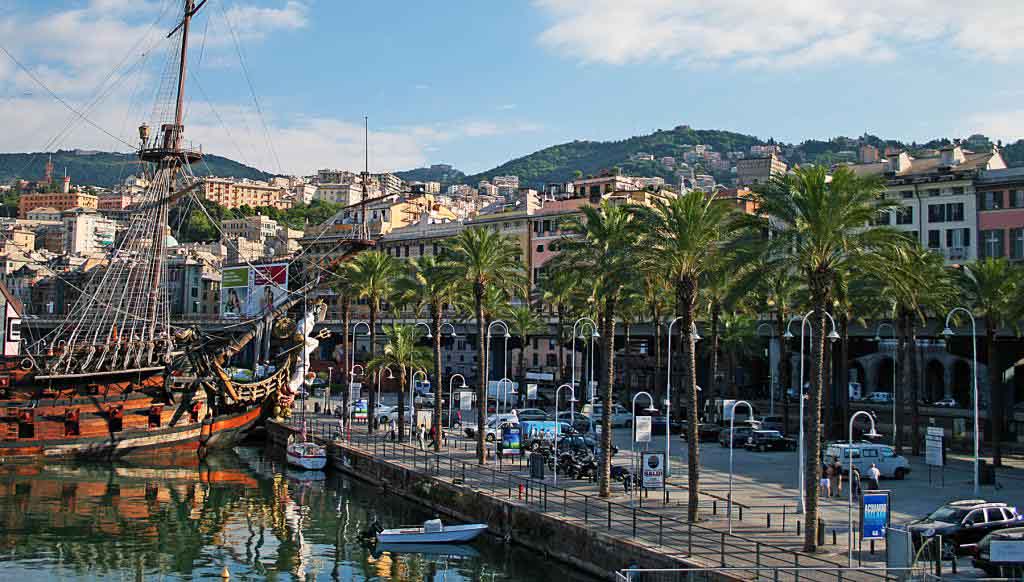
Ancient finds from graves and trading places of the fourth and fifth centuries BC reveal that the Greeks were once involved in trading in this area. The natural port of Genova (today’s Porto Antico) was always the main reason for making Genova a flourishing trading capital. But at the same time, it attracted conquerors, raiders and destroyers. Genova’s history has been therefore marked by the Romans, Herulem, Byzantium, Sarazenes and other ruling tribes.
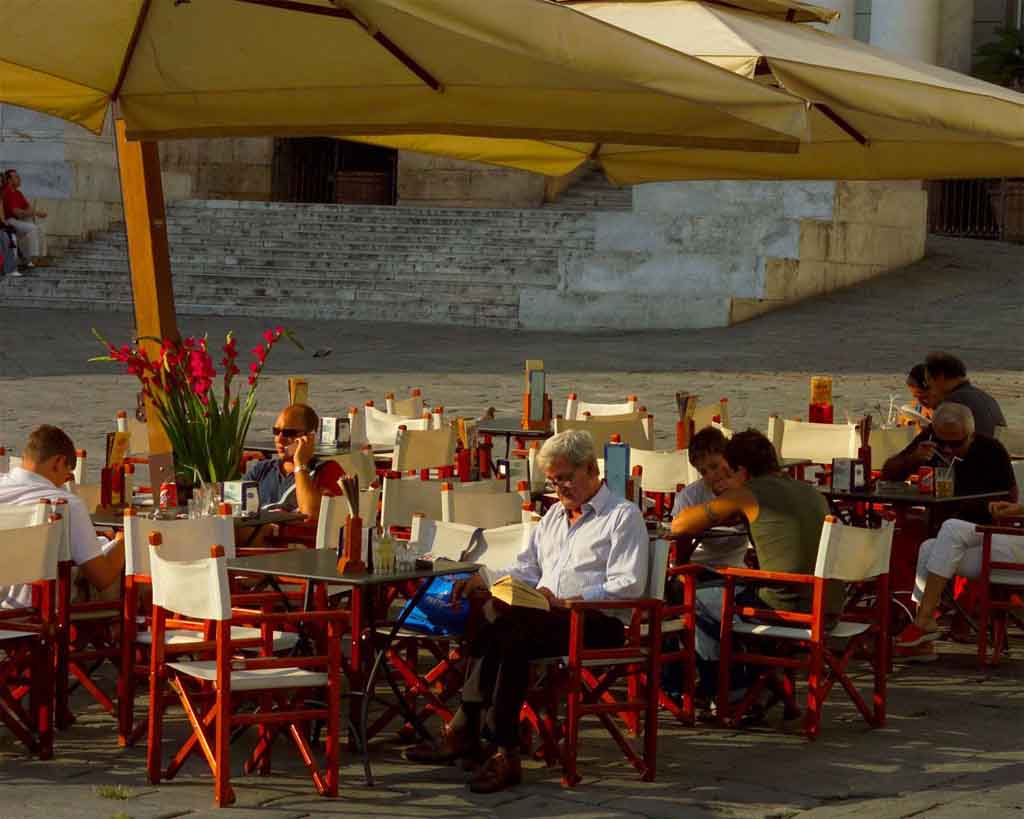
Powerful alliances and trading activities with Spain as well as the conquest of parts of North Africa and the Canary Islands turned Genova into a mighty seafarer power. This strong position also enabled Genova to create the government of a city state led by “Capitani” and later the “Doges”. The city state was wealthy and powerful and the magnificent palaces still to be seen in Genova are reminders of the town’s grand history.
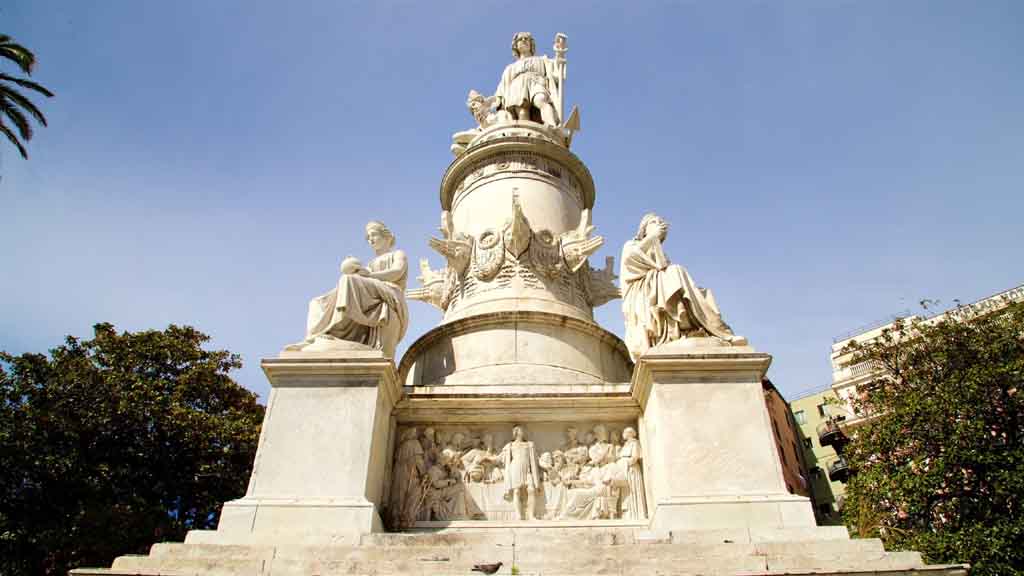
Genova held on to a wide network of estates some of which they lost when the east Roman empire collapsed. It also entertained a network of trading partnerships, particularly with Spain. As is widely known, the Genovan seafarer Christopher Columbus started his journey under the Spanish crown from Genova to find a western passage to India.
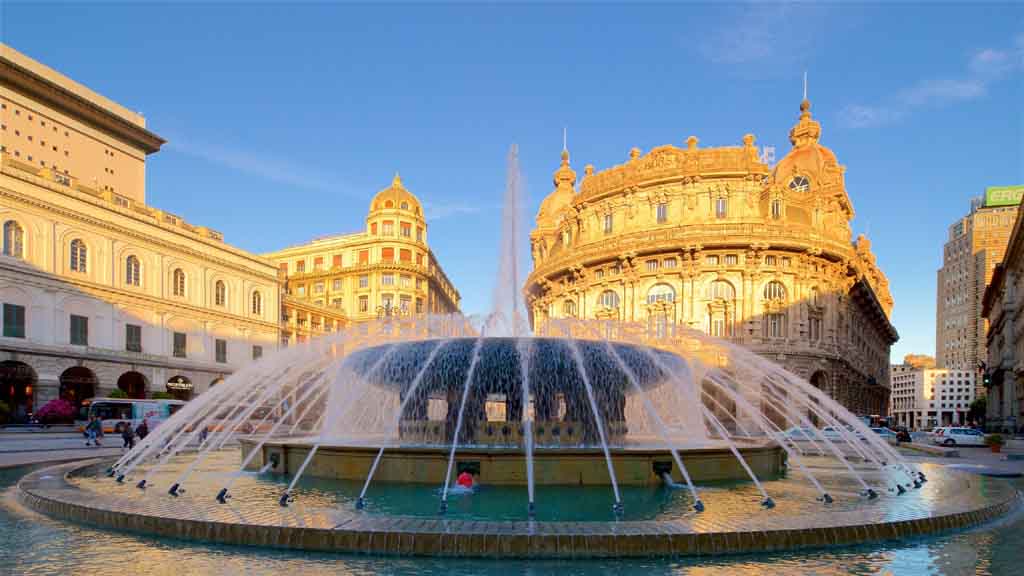
At the same time the Genovan city state was made capital of the Ligurian Republic which at the time belonged to France. When the Kingdom of Sardinia was integrated into Italy in the second half of the 19th century, Genova fell under the rule of the United Kingdom of Italy. Luckily it survived the second world war without the blastings ordered by the German leaders and was handed over to the partisans.
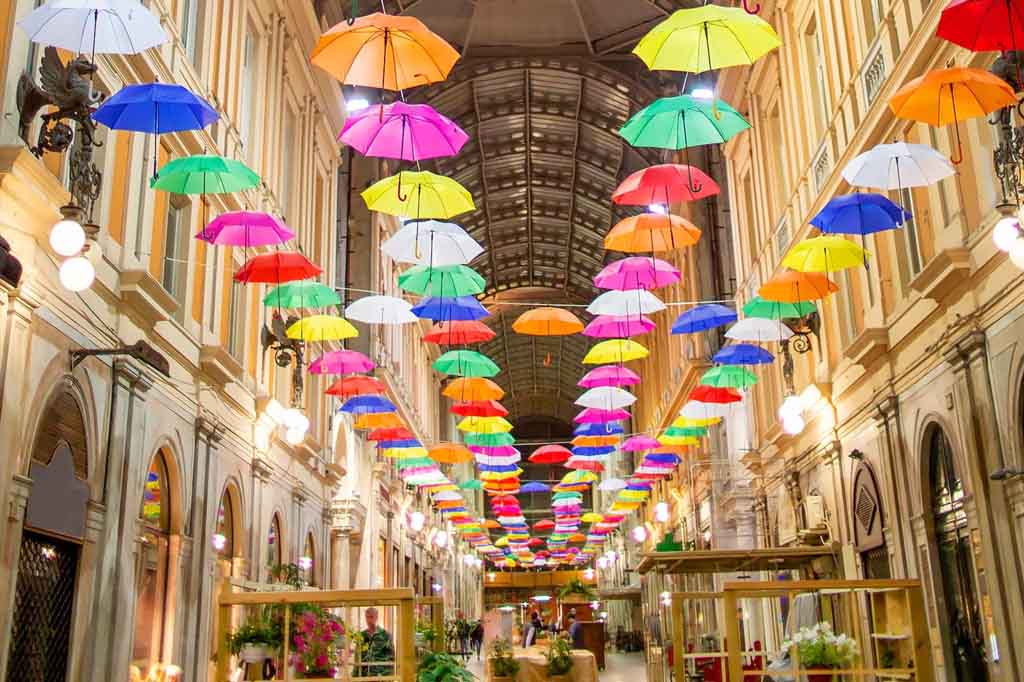
Genova has turned into a constantly evolving city offering a vast number of activities and initiatives aiming to turn the city into an attractive town for its inhabitants, businesses and tourists alike whilst integrating the rich cultural and historic heritage. The ever changing cultural events, exhibitions, culinary delights, architectural novelties and numerous places to go shopping or simply relax are waiting to be explored.
GENOVA’S OLD TOWN
a multicultural Experience in meandering Mews
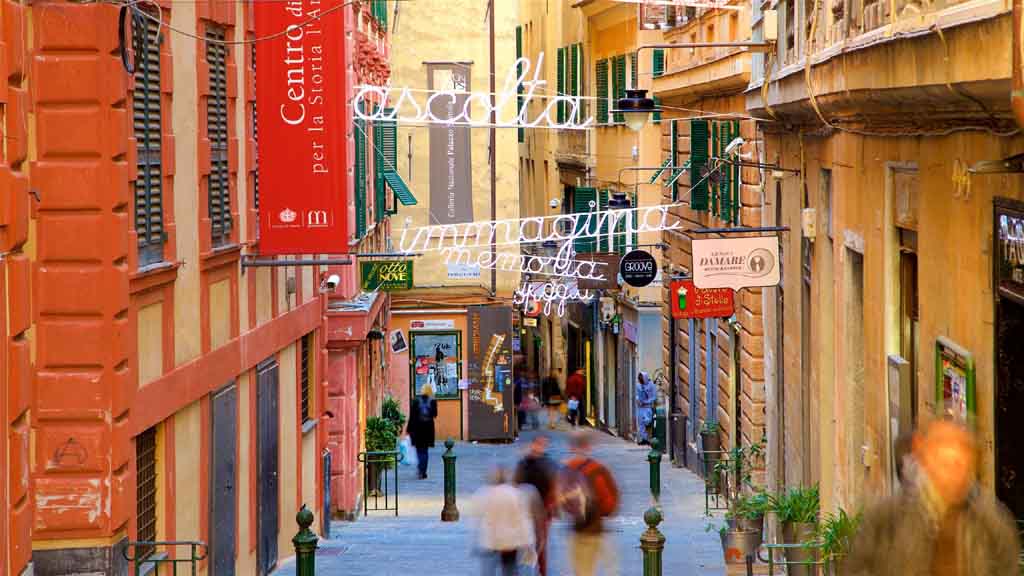
The historic old town of Genova is the largest medieval city centre in Europe. It covers 113 hectares made up of many narrow mews (‘caruggi’) in which one can easily get lost. Some of the mews are no wider than 1 metre and it is advisable to explore the network of mews on foot or Vespa or join one of the guided tours. There are hidden squares connected with many of the churches, magnificent palaces dating back to the glamorous Genovesan aristocracy and filled with artefacts from the past. Some of the palaces have been turned into museums and are open to the public.
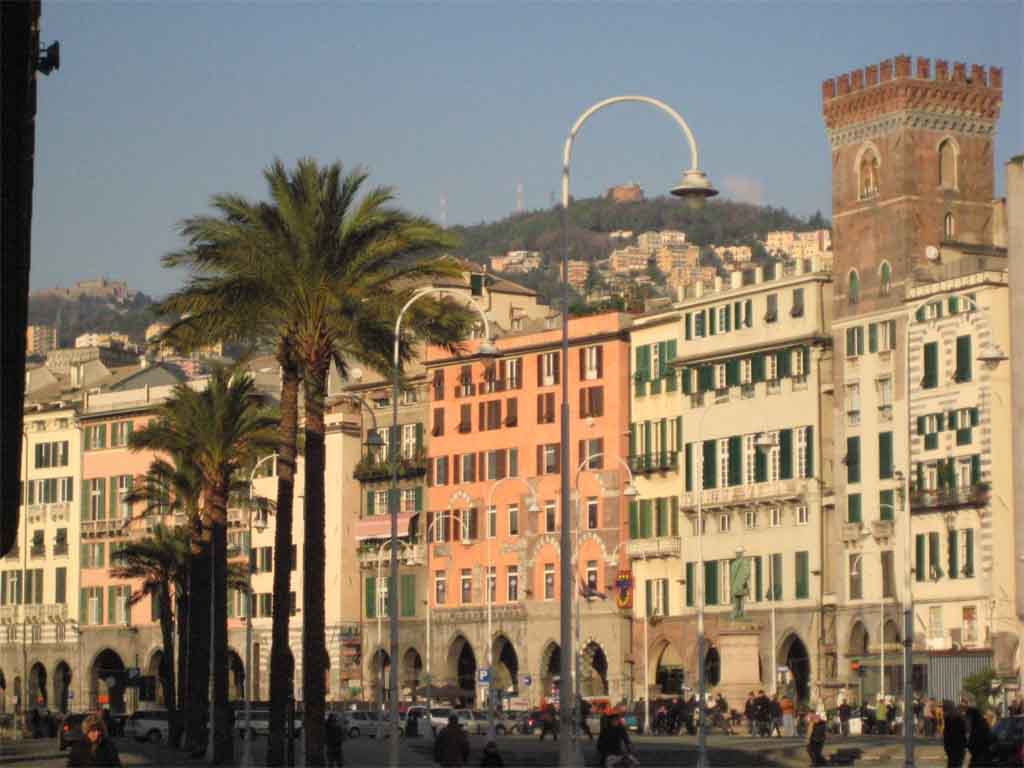
The mix of different cultures and social status living in close proximity make this old town to attractive. It is full of life with the scents and aromas of different cultures wafting through the mews and time seemingly standing still. Different languages can be overheard at dusk and the mix of artisan workshops, antique shops all close to each other create an unique atmosphere. Typically Ligurian food such as focaccia which is not a pizza, home-made pasta, Genovesan pesto and capponmagro can be savoured everywhere. Street traders offer their goods next to elegant restaurants and bars and upmarket fashion stores are neighbours to small rustic trattorias.
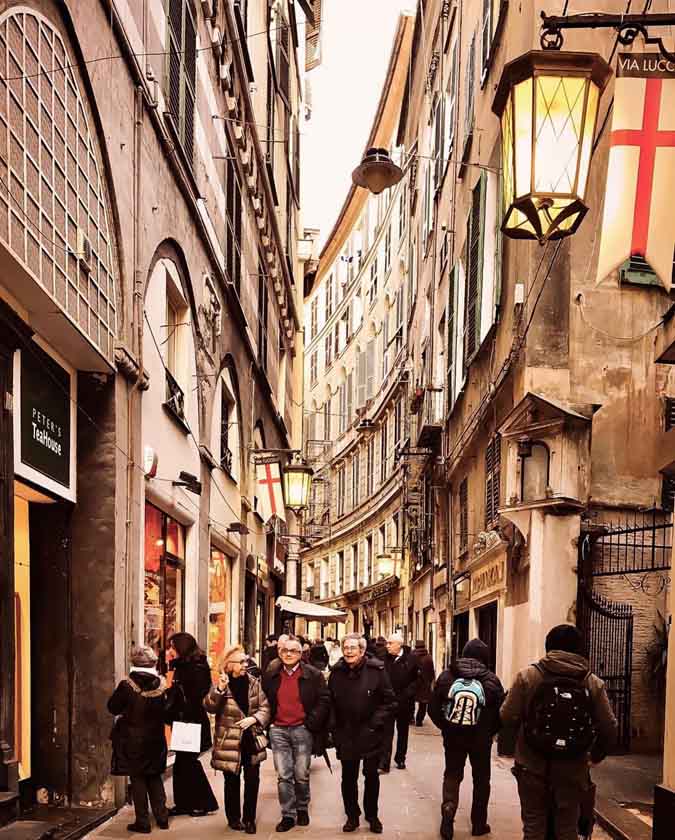
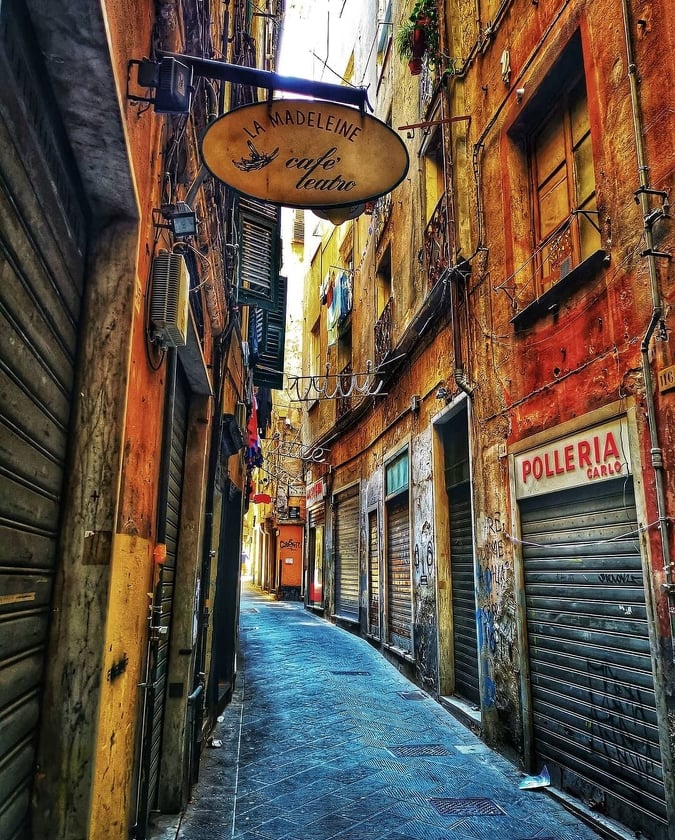
Some of the houses have been abandoned and are in disrepair and in other places houses are being renovated so this this world cultural heritage can be maintained.
Signs were put up to help people exploring the old town find their way.
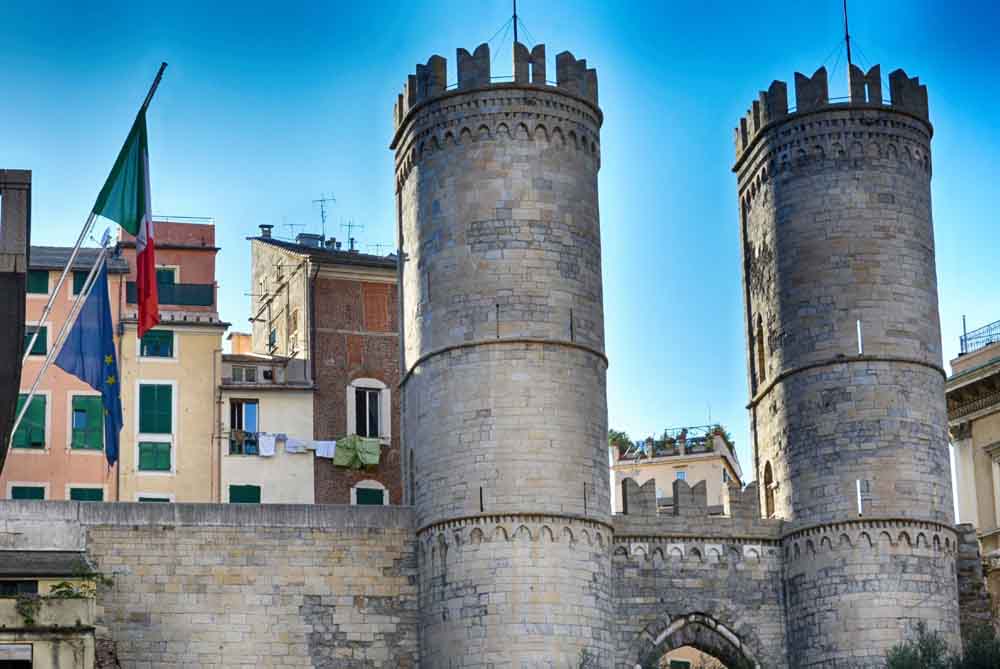
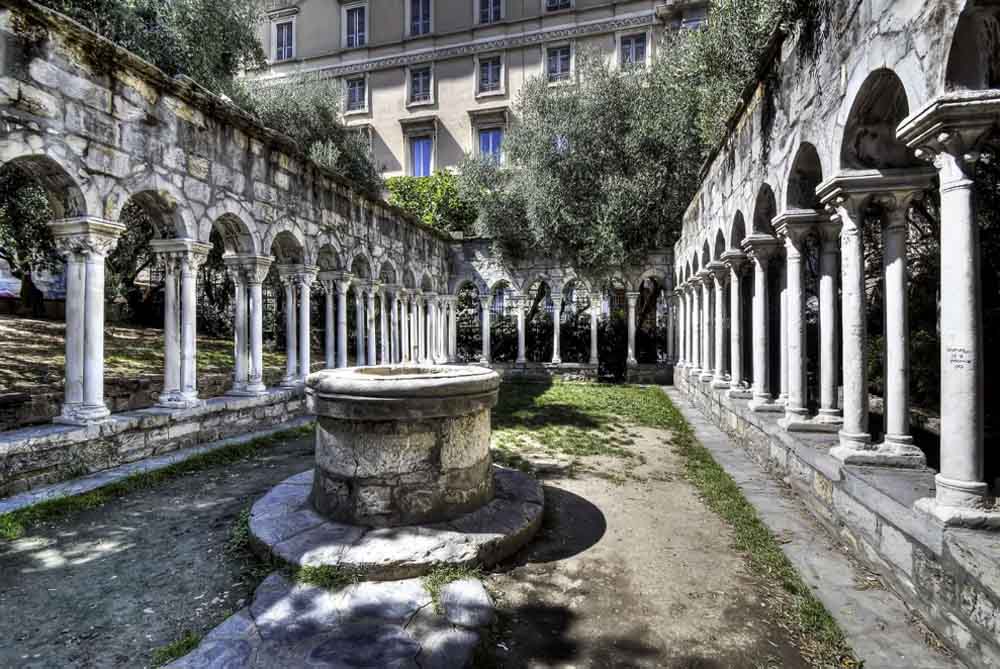
To name just one of the sights, there are the remains of the town gate “Porto Soprana” from medieval times and used as a prison in the 18th century. Just a few steps from here Christopher Columbus was born and spent his childhood in the reconstructed 18th century “Casa di Cristoforo Colombo’.
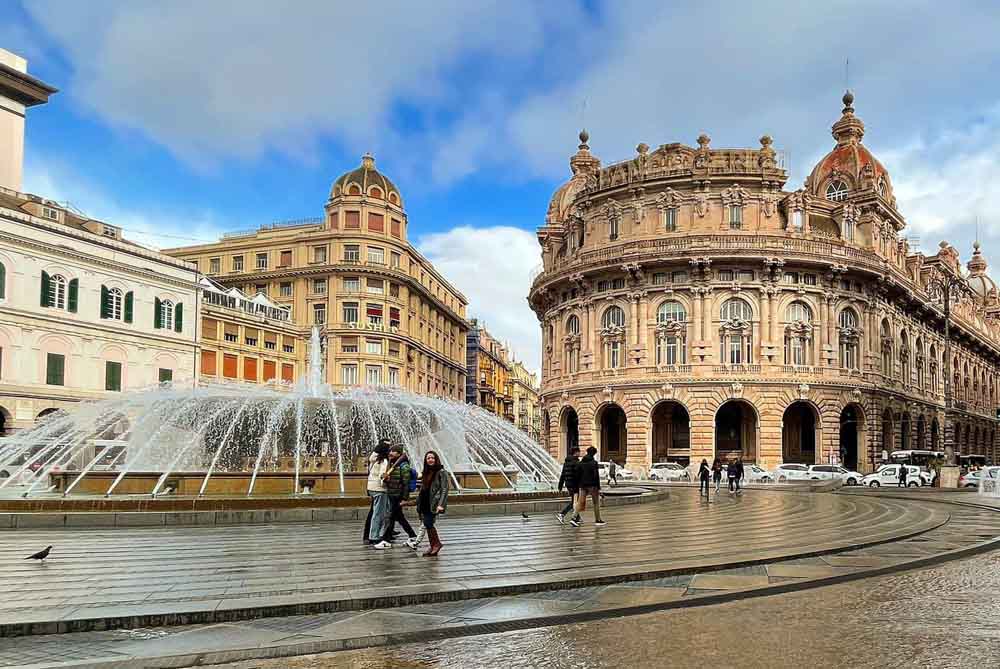
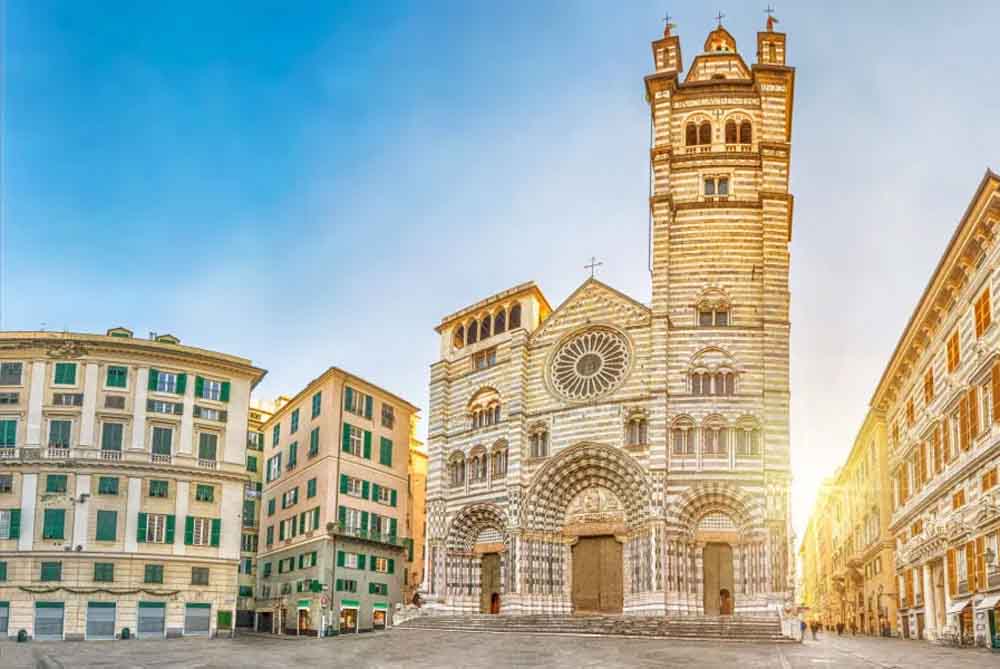
One of the few squares with imperial flair thanks to the surrounding 19th century palaces is the “Piazza de Ferrari” with its impressive water fountain where each year a number of Genova’s festivities are being held. Worth mentioning is also the “Dome San Lorenzo” built in 1100 AD and at the time the largest church in Genova to honour Genova’s holy patron San Lorenzo. The gothic striped façade was only added by the end of the 16th century.
I PALAZZI DI GENOVA
a trip through Genovean Art History
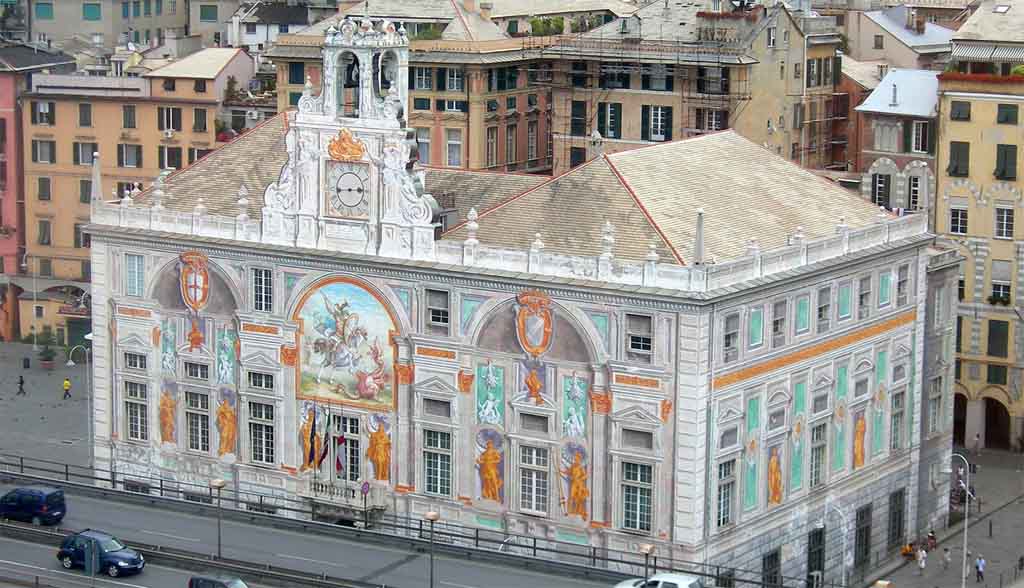
The palaces of Genova are just as characteristic for the old town as the “caruggi” and display the former glory of wealth and power.
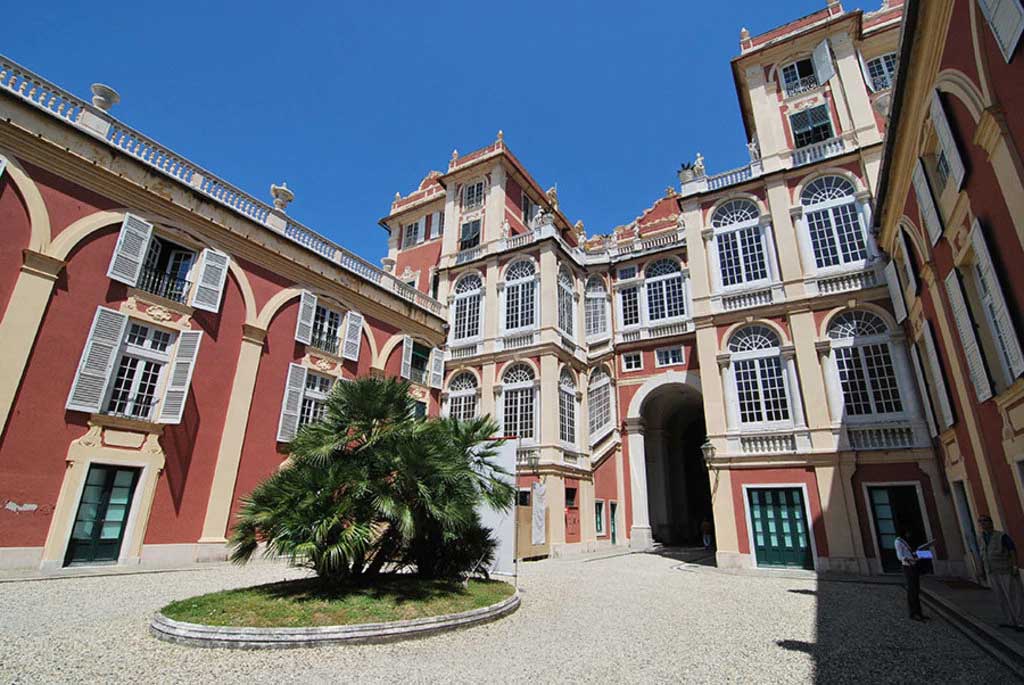
The name Palazzi del Rolli goes back to the “Elenco degli Alloggiameneti pubblici o Rolli” (register or roll of public accommodation) which was agreed by the Senat in 1576 and regularly updated since. Following this agreement and as described in our newsletter 01/2023 the landlords of the palaces were obliged to entertain state visits. The higher the rank of the guest the more glamorous the palaces of the wealthiest families who were allocated as hosts. In 2006 the “Le Strade Nuova e il Sistema del Palazzi del Rolli” were declared as world cultural heritage. There are 100 palaces in total, 42 of which belong to the Palazzi del Rolli”. Some are still in private hands and others have been turned into museums displaying valuable art collections or have become bank headquarters. Three times each year the palaces dei Rolli open their doors for the so called Rolli Days when jewels and art treasures are put on display.
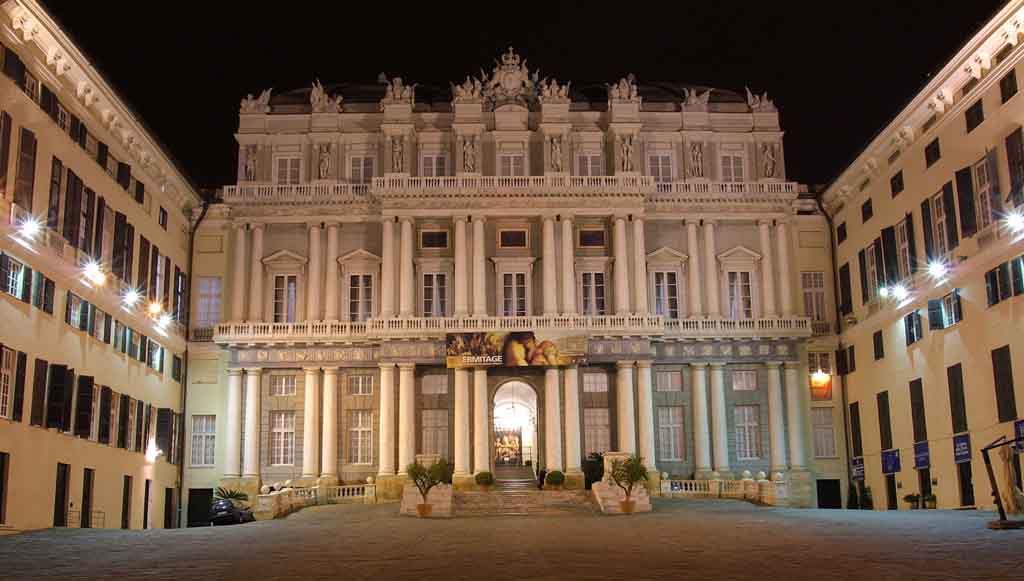
There are a few well known palaces we would like to draw your attention to.
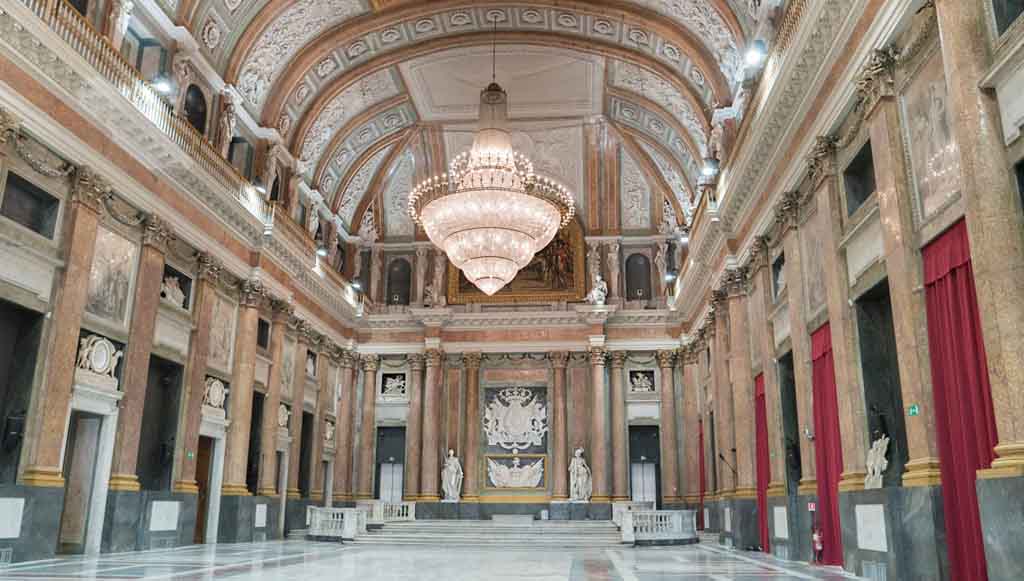
The “Palazzo Ducale” (Duke’s Palace) was built in the 13th century and for centuries used as the main residence for Genova’s ruling family. In 1982 the palace was renovated and for years became the headquarter of the judicial authority. These days the palace regularly hosts international exhibitions, concerts and conferences. The inner courtyard with its archways is a lively place where to browse through small shops and restaurants.
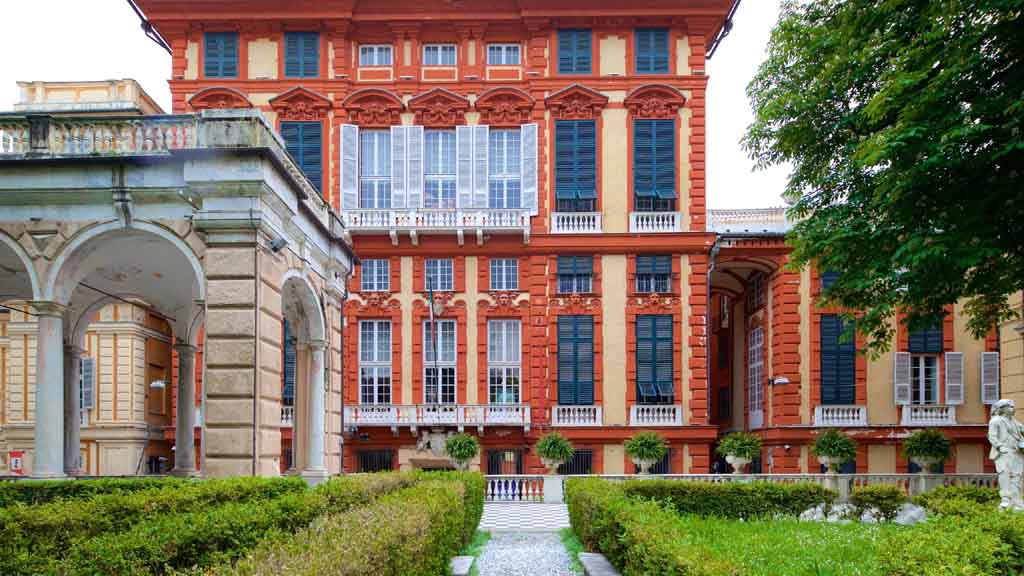
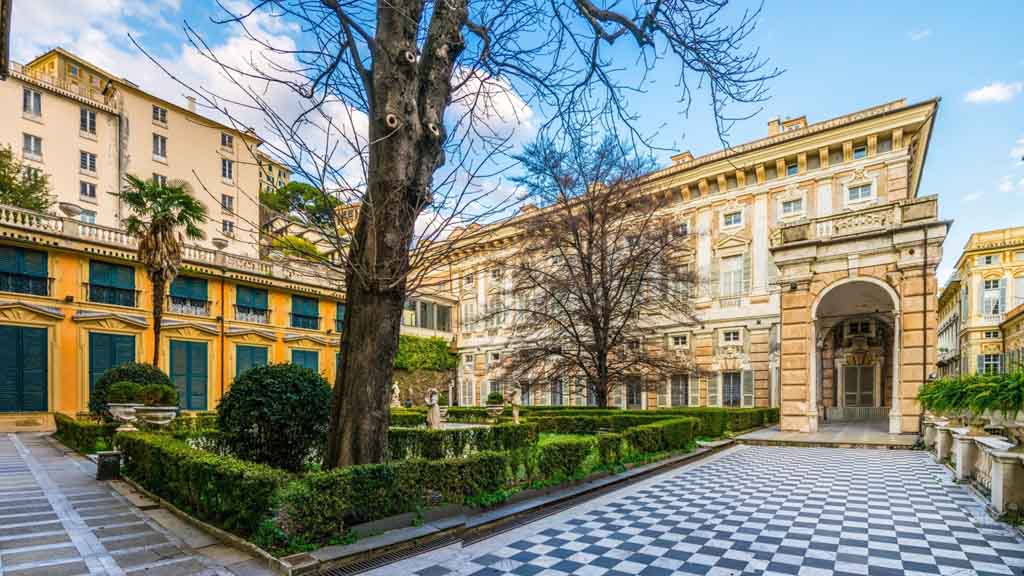
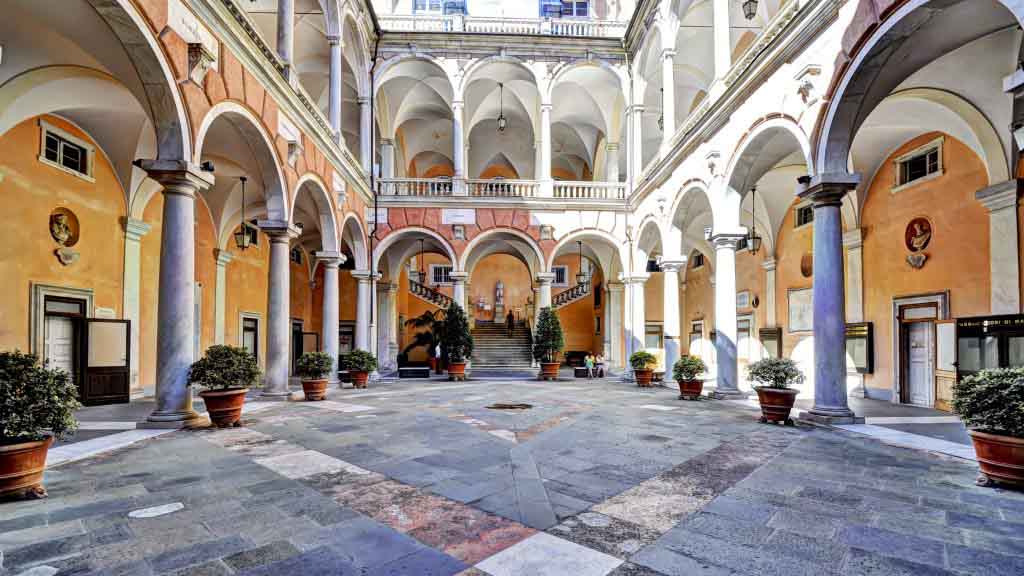
Genova’s main boulevard is only 7.5 m wide and is lined by 14 palaces with impressive facades, some of which are occupied by large bank headquarters which have always been of significance to the city.
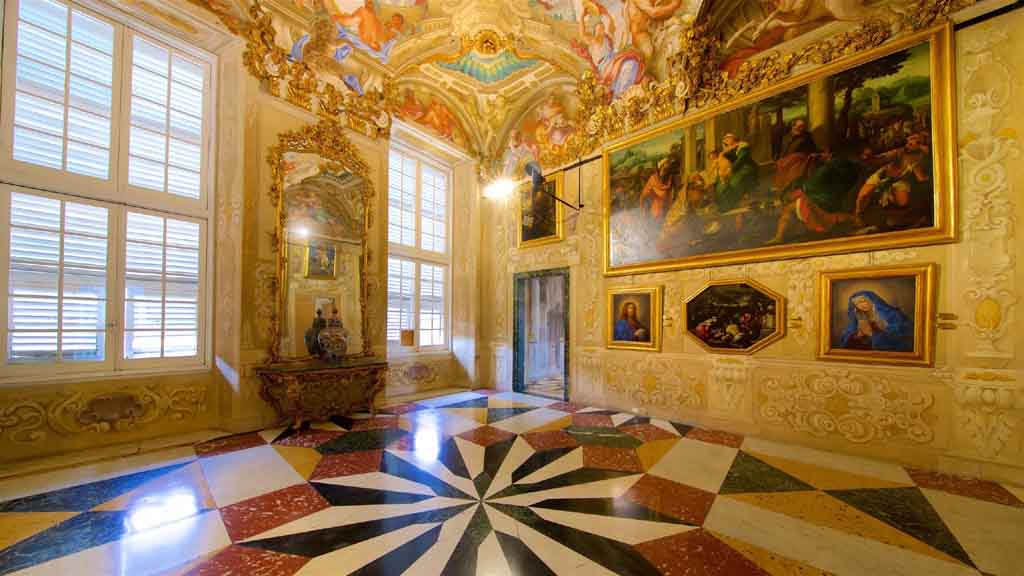
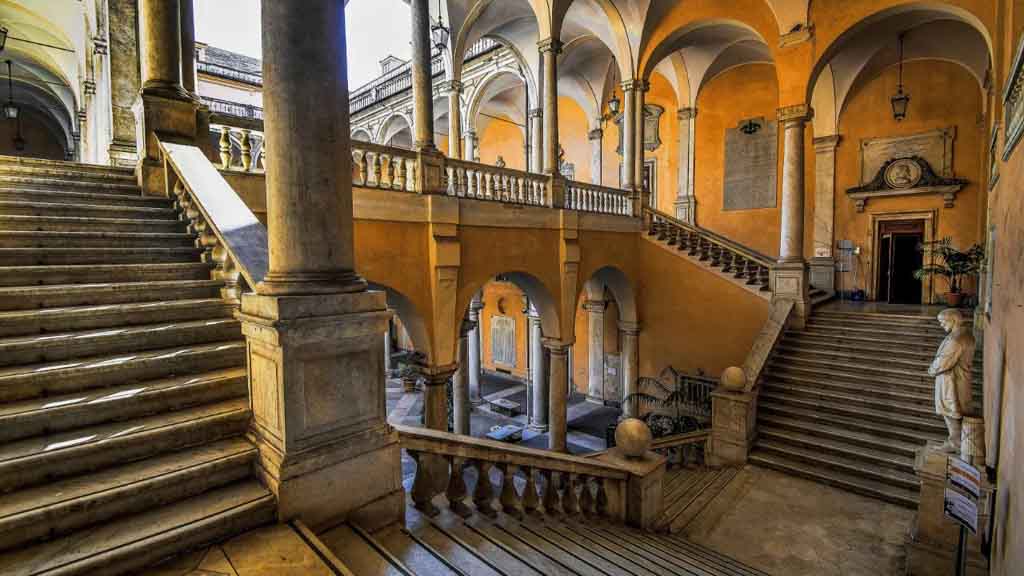
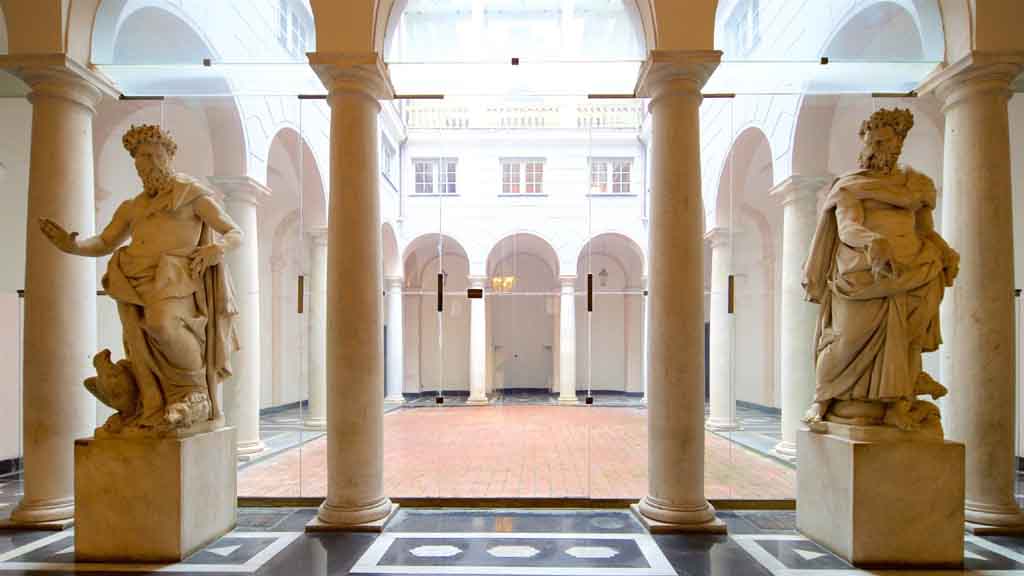
Three palazzi from the 16th century are open to the public and range under the name “Musei di Strada Nuova”; the “Palazzo Rossi” is home to an art collection belonging to the Duchess Galliera; the “Palazzo Bianco “is one the most respected galleries in Europe and the “Palazzo Doria Tursi” being the most magnificent of the three, accommodates not only the city council but also some exquisite exhibits such as the favourite violin of Nicolo Paganini.
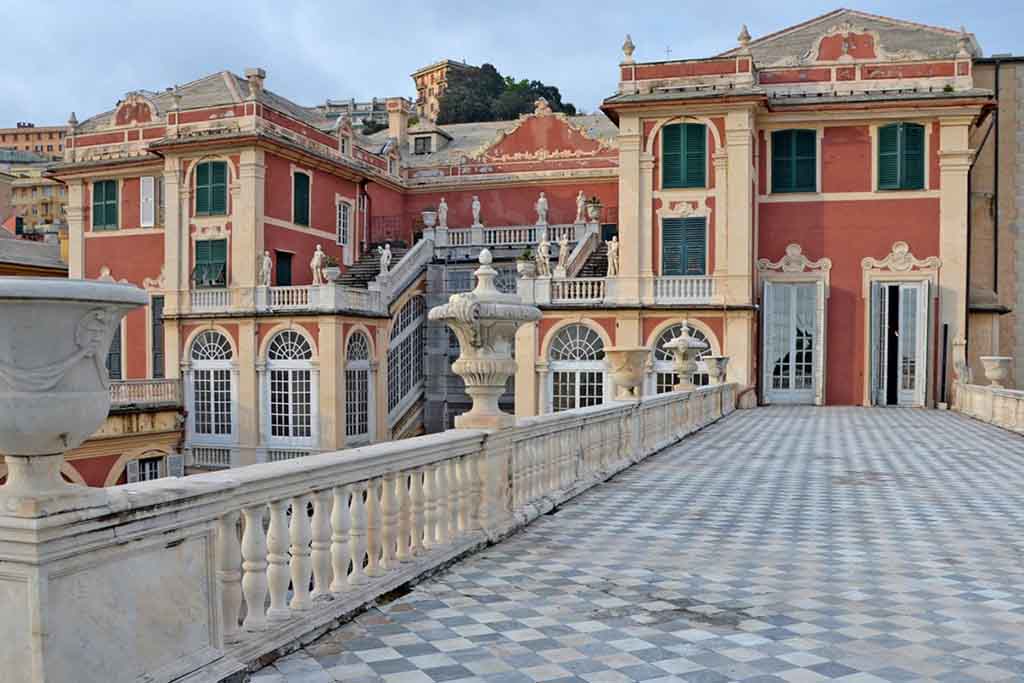
The ”Palazzo Reale” from the 17th century on the Via Balbi was the royal palace of the Houses Savoyen-Piemont. In the 18th century it was lusciously adapted to the Baroque and rococo period.
The halls adorned with frescos and the entire art collection displaying Italian and international painters and objects of daily use from the 17th to 19th century have been meticulously kept. The mirror hall and the roof terrace with stunning views over the city and beyond, deserve a special mention.
To find out more about the Rolli days and the open palaces please follow this link:
https://www.visitgenoa.it/rollidays-online/rolli-days/
THE ACQUARIO DI GENOVA
Ozeaneum of Superlatives

The trading port Genova has expanded over the years, it moved location and adapted to modern industrial standards.
The old trading port of Genova, the Porto Antico was extensively renovated in 1992 in view of the world exhibition and became a major point of interest.
The selection of museums and the Biosfera an artificially created rainforest biotope housed in a glass bowl has become a landmark of Genova.
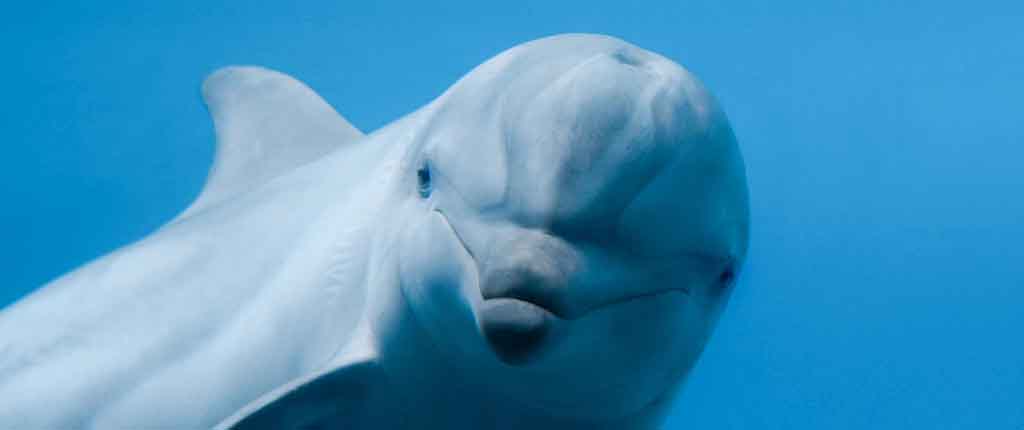
When the Acquario di Genova opens its doors in 1992 the Porto Antico started attracting up to one million visitors per year. The basins have been adapted to the natural habitat of the animals living in the rainforest, a Caribbean coral reef or the Indian Ocean.
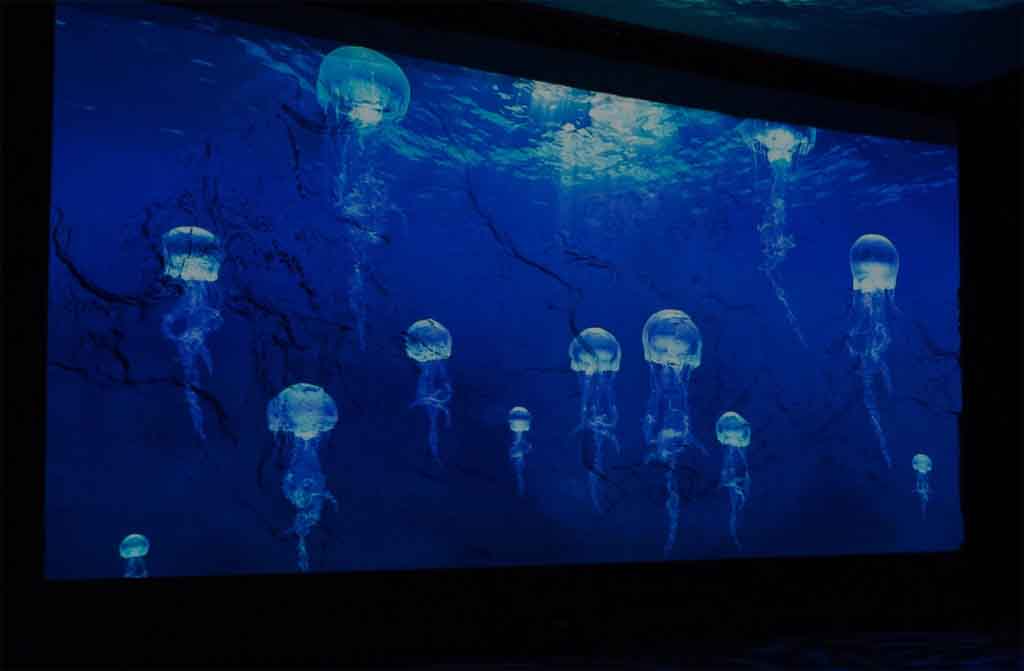
Over a length of 430 metres and 63 basins the Acquario di Genova has some 12000 animals on display. Five of these basins can be observed from behind a glass pane stretching over 2 floors making the Acquario die Genova the second largest marine life centre in Europe behind Valencia.
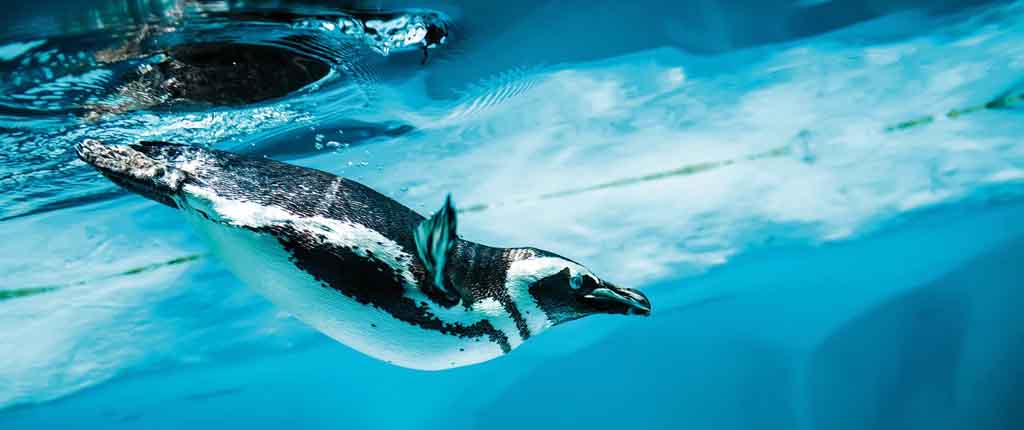
The diversity of species is breath taking and you will encounter local fish as well as tropical fish and sharks. It is the only aquarium in Europe where you see Antarctic fish kept in basins at a water temperature of -1°C. There are also jelly fish, amphibia and reptiles, crocodiles and water turtles as well as dolphins and marine mammals such as seals, sea cows and penguins.
The basins where the manatee, in danger of extinction also known as the creature Christoph Columbus mistook for a mermaid, is unique in Italy.
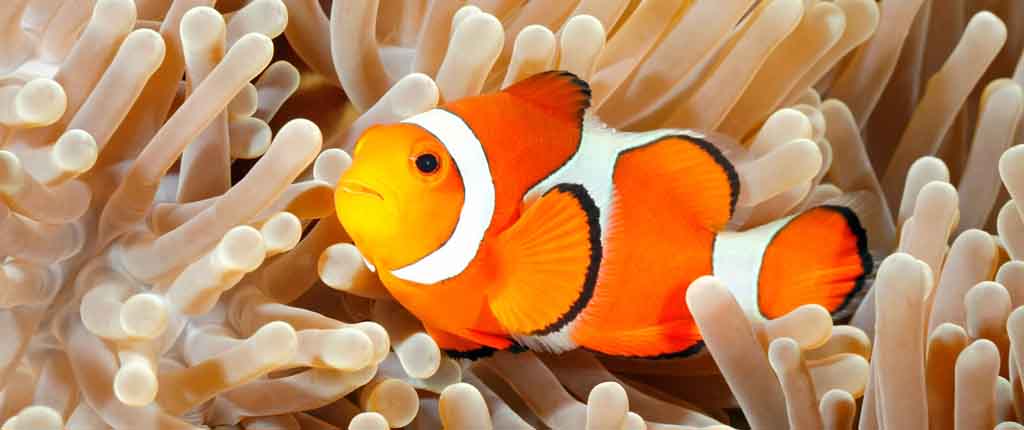
You will be treated to an exciting journey through the worlds’ oceans and lakes and learn about the beginning of maritime life. A 3D film will take you into the exciting history of plankton.
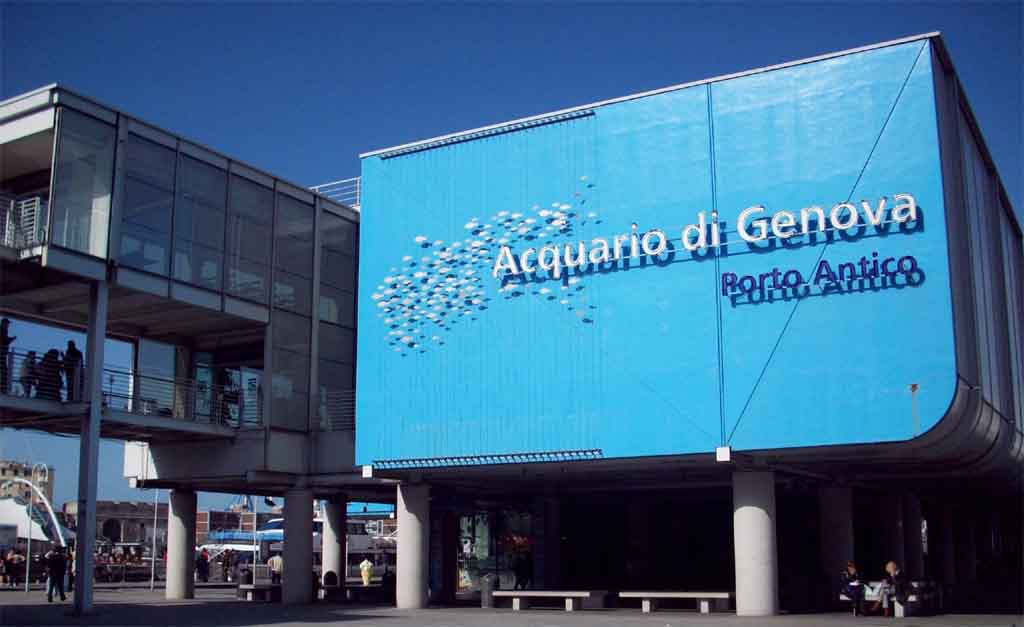
The Ozeaneum consists of 3 connected buildings. To begin with you can take the time to absorb the exhibits of the main building.
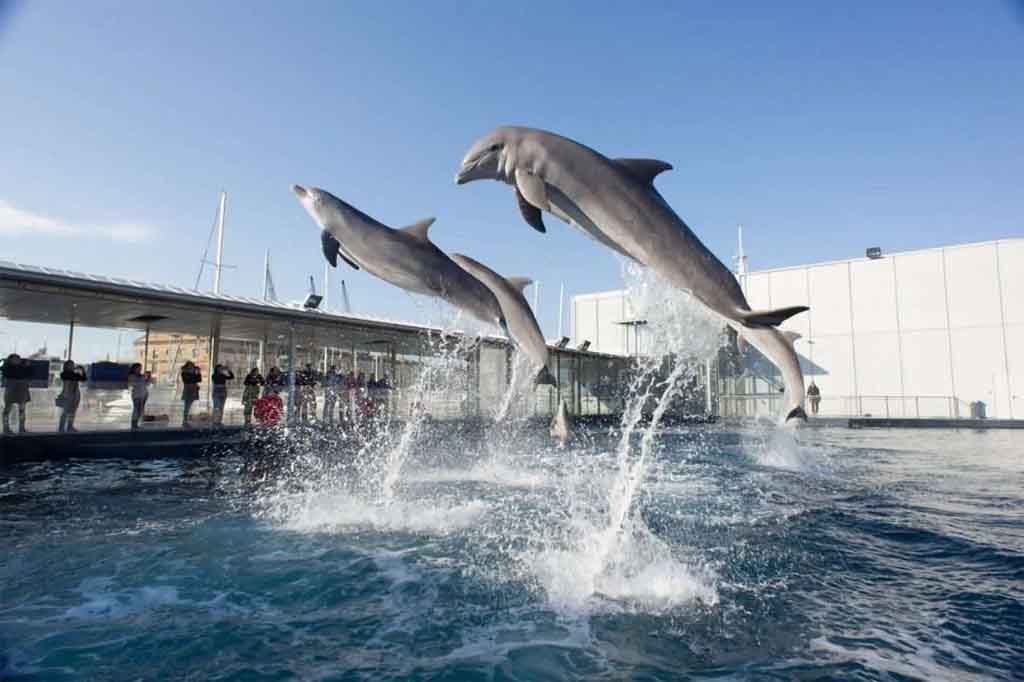
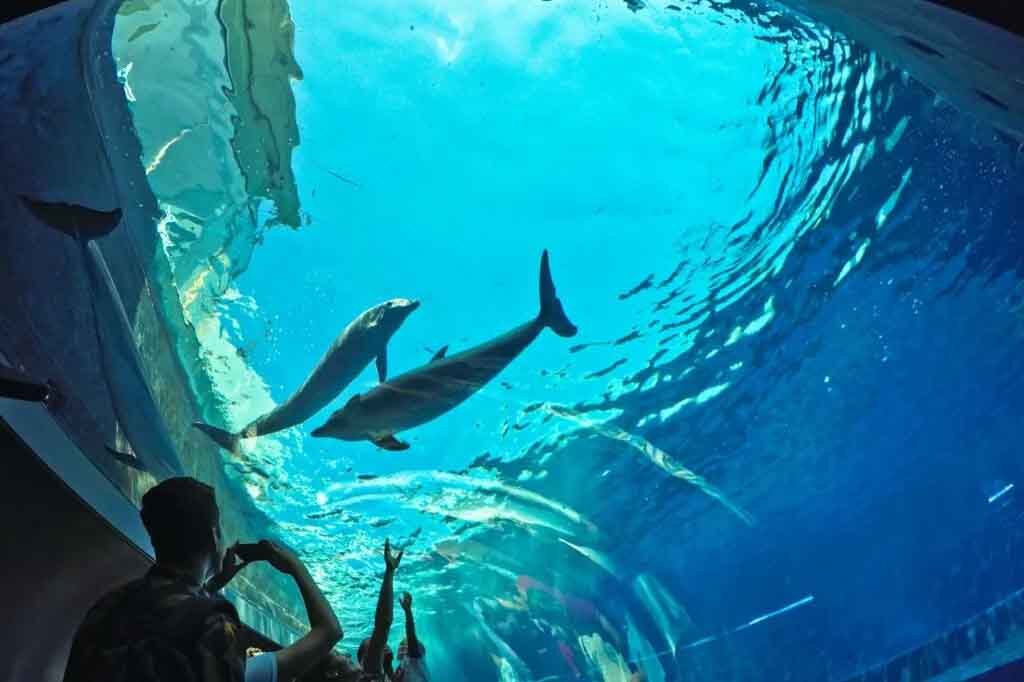
The open air basin with pavilion and home to the dolphins have turned into a main attraction since their opening. From a 15 meter underwater tunnel you can observe the rather communicative marine mammals and in the third section of basins and exhibitions areas, some are housed below deck of a real ship, the “Nave Blu”.
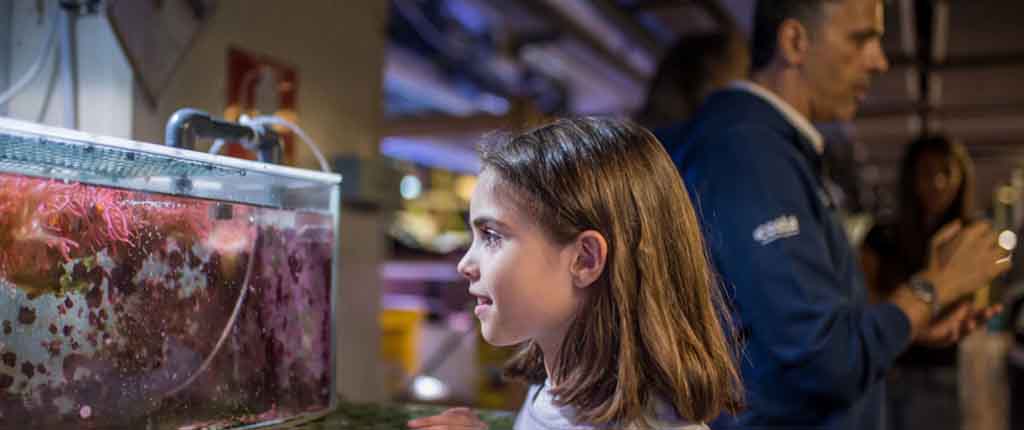
Finally there is the large basins where one can physically get in touch with the sea dwellers.
For more information on guided tours, tickets, opening times and parking please visit:
https://www.acquariodigenova.it
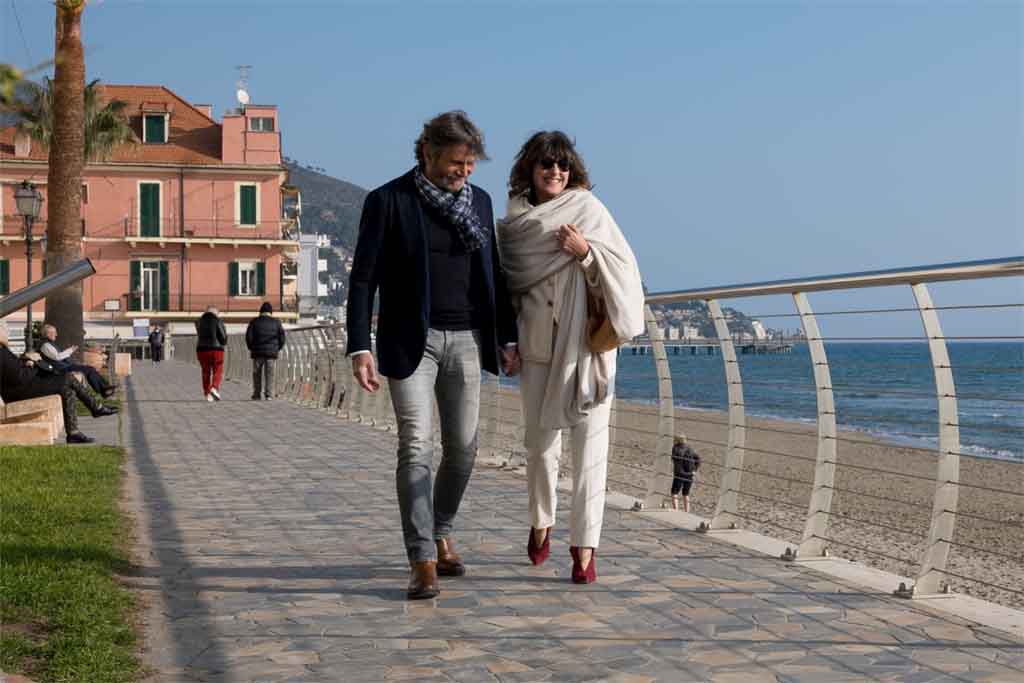
With a bit of luck, the weather in Liguria can still be pleasantly mild around Christmas with plenty of sunshine and daytime temperatures around 13°C and 7°C at night.
The atmosphere in Liguria is one of calm and happy expectation for Christmas, celebrated with simple traditions followed by families across the region.
Dignâ a noxe
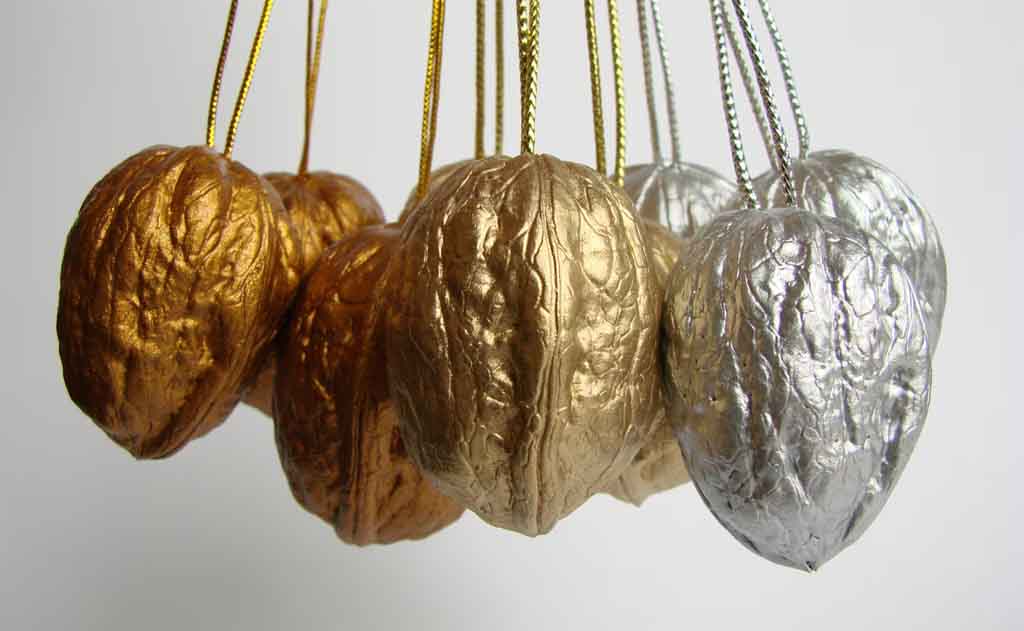
This tradition marks the gratitude of traders towards their customers. The trader gives out a “digna da noxe” to his customers. This walnut coin is seen as a symbol for wealth and wellbeing.
Fire and laurel
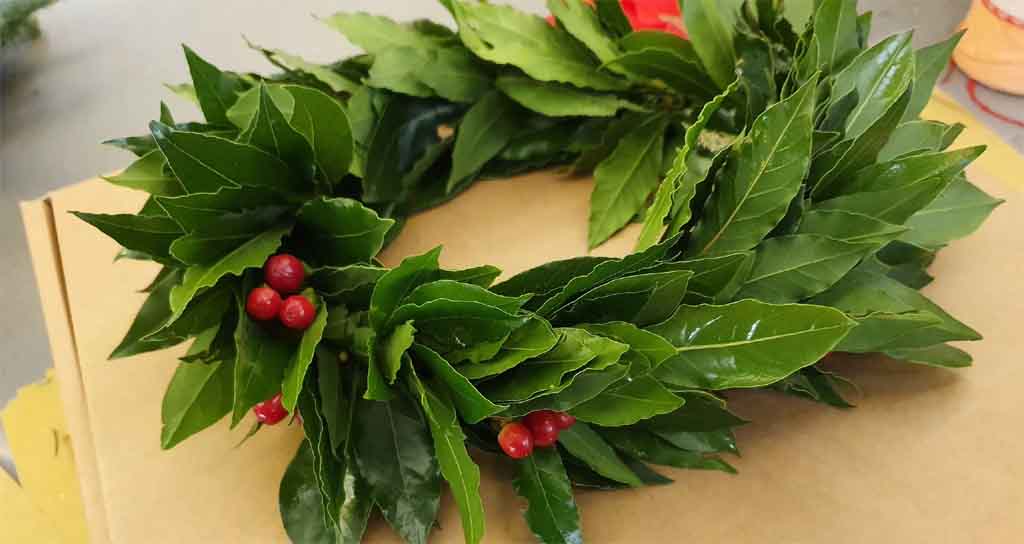
In Liguria the laurel is regarded as sacred and a bearer of good luck and a star of Christmas.
In the old Ligurian times Christmas trees did not exist. Instead, a laurel tree was placed in the centre of the room and decorated. On Christmas eve acorns, berries, macaroni, walnuts, twigs and of course bay leaves were tied to the tree with ribbons. As a symbol of cleansing the house and inhabitants for the new year, a large log preferably from laurel wood was placed in the fireplace and burned before New Year’s Eve.
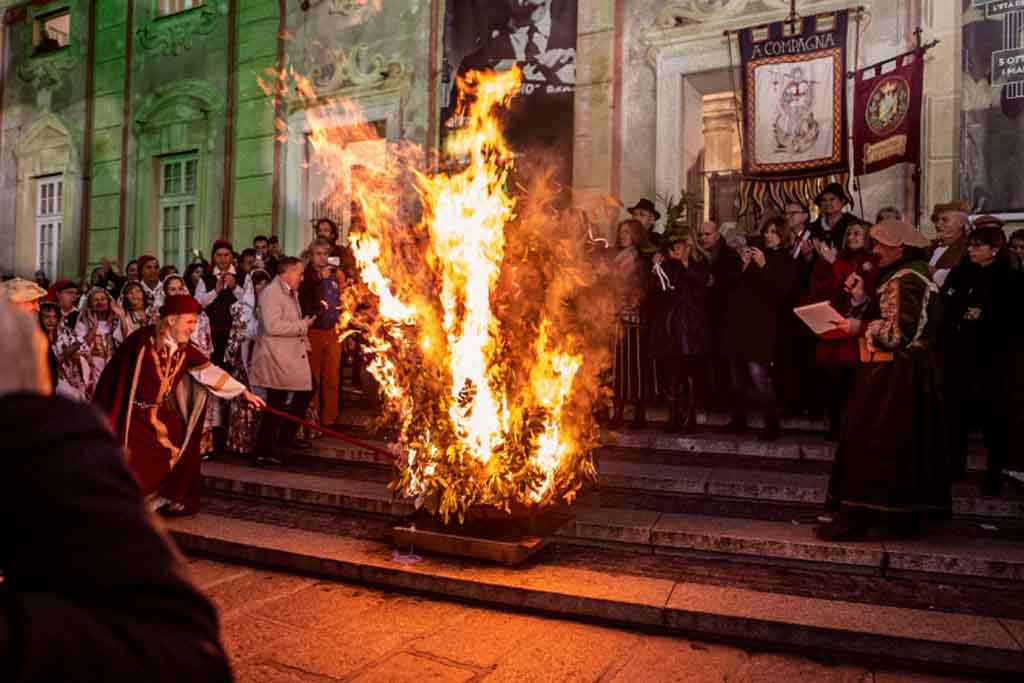
The laurel is still of great significance when it comes to public celebrations. According to legend, every year on the last Saturday before Christmas and following a festive procession, the Abbot handed the Doge a laurel log decorated with red and white ribbons in the colours of the Genovesan flag. The log is meant to bring good luck for the coming year and is being burnt on the piazza. Once the fire has died down, members of the pubic take a small piece of burnt wood back home as a bearer of good fortune. The tradition is still ongoing and is part of the Ligurian Christmas celebrations.
Ligurian Mangers
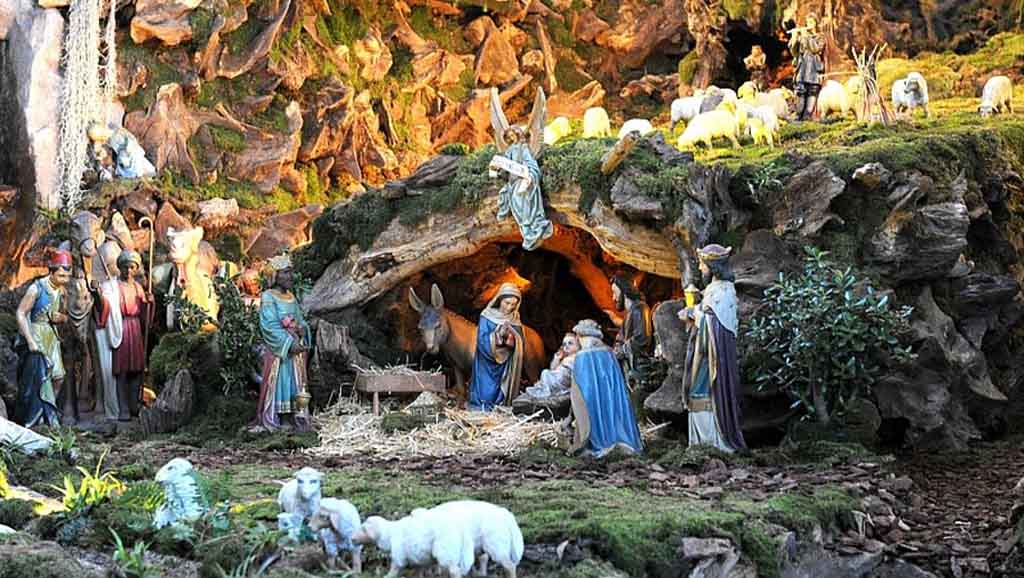
Mangers in Liguria look back on a long tradition and are being exhibited in various places.
They belong to the old custom of processions when religious statues were carried through the streets of Genova. The art of making mangers started in the baroque period and was introduced by wealthy merchants and members of the aristocracy.
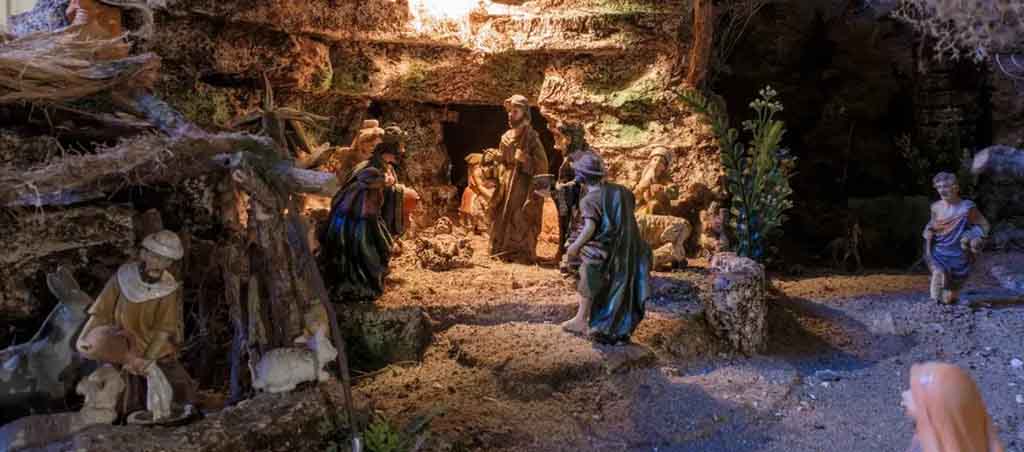
The figures were carved from wood and painted and in old church tradition painted with gold. During the 17th and 18th centuries more and more wood carved figures such as farmers, craftsmen, aristocrats, commoners, pageants, beggars and animals were added to the mangers. Sometimes the wood was replaced with clay. When walking along the coast or through villages you will encounter many beautifully crafted mangers displaying different scenarios.
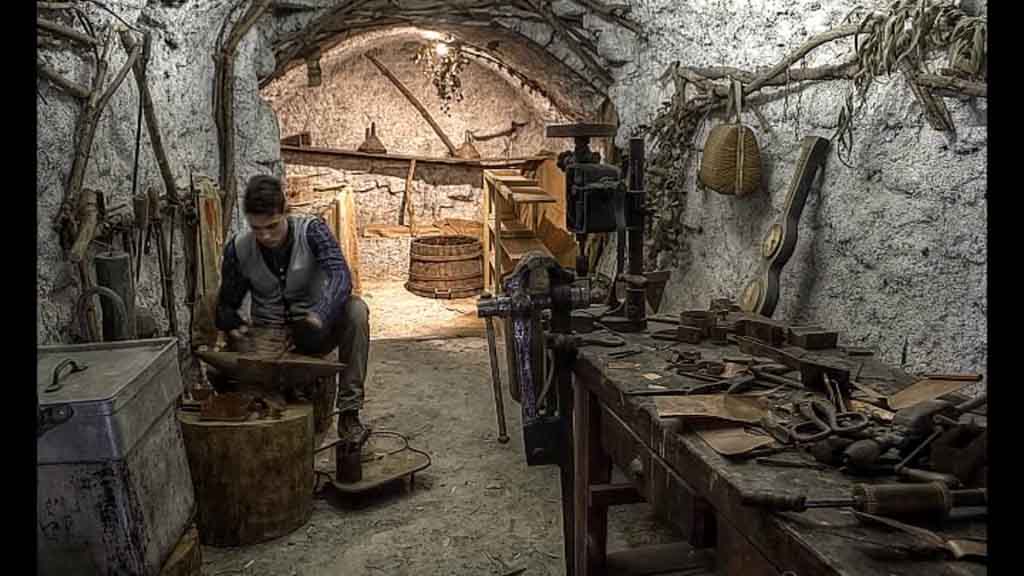
For two days of the year time is turned back by some one hundred years in Isolabona. This year and for the 18th time the small medieval village will return to the beginning of the 20th century. The electric lights will be partly switched off and the village is lit up by torches.
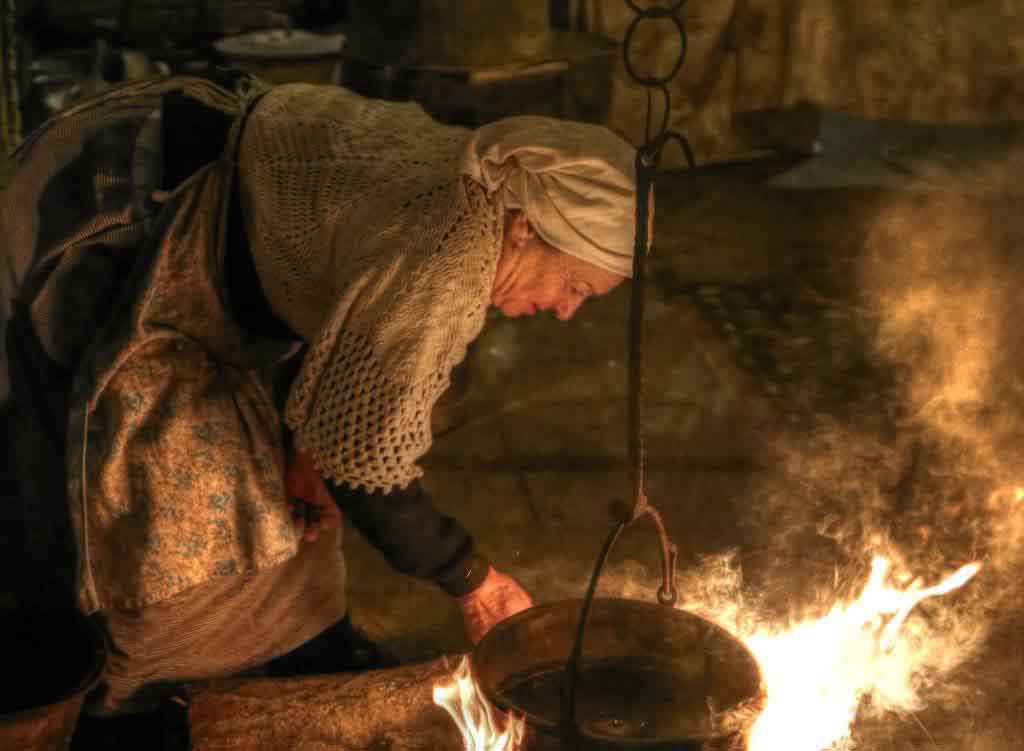
Old craftmanship will be brought back to life, restaurants will open up their cellars, stonemasons, blacksmiths and cobblers, knife grinders and basket makers get out their traditional tools. Farmers, animals and sceneries from long forgotten times fill the streets with life. Visitors are heartily invited to join in this unusual time travel and savour a slice of Isolabona’s history with the tastes of local wine and cuisine, chocolate and delicacies.
Christmas bonfire in Dolceacqua
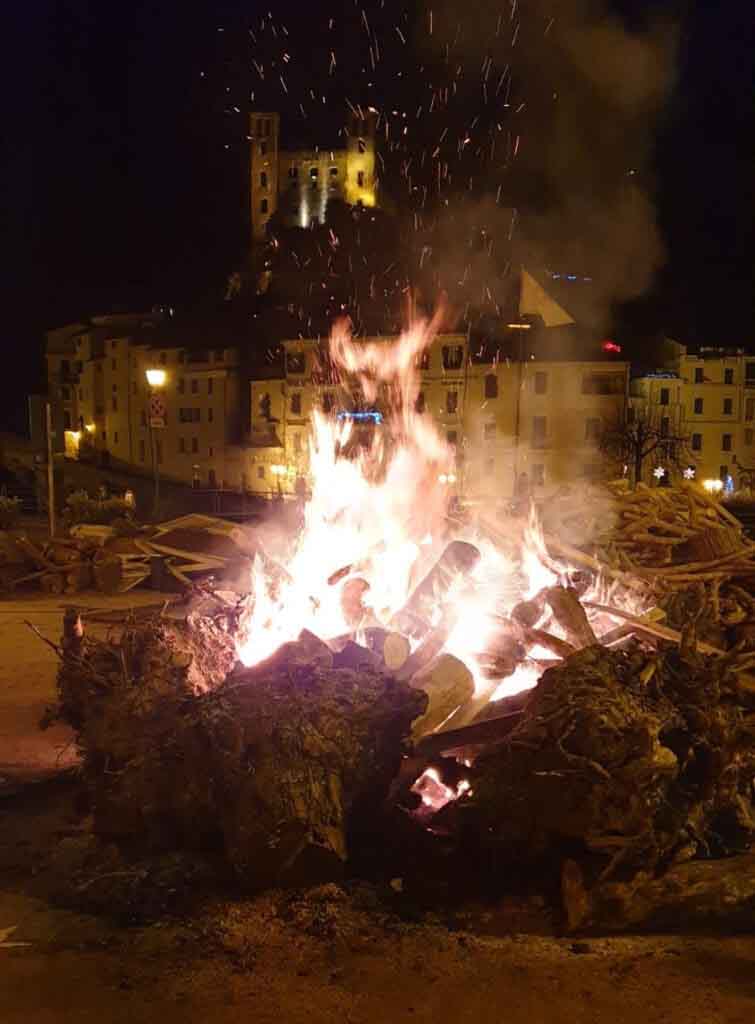
On both of Dolceacqua’s major squares, “Terra” and “Borgo” large bonfires will be it to celebrate Christmas. Traditionally the young people go out and gather firewood to compete for the longest burning fire.
La Befana – The Witch arrives on Holy Three Kings Day

In Italy St Nikolaus leaves his job traditionally to his colleague, the “Befana”. Befana is an old well-meaning witch, clad in old clothes and covered in grime. In the night of 5th to the 6th of January she flies on her broomstick from house to house, carrying a bag full of sweets, grime and coal. On the eve of 5th January the children hang up their socks on the mantelpiece or put their shoes right in front of it. During the night Befana arrives through the chimney and gives sweets to the children. The bad children however only get a piece of coal (of course this is not real coal but a piece of “carbone dolce”).
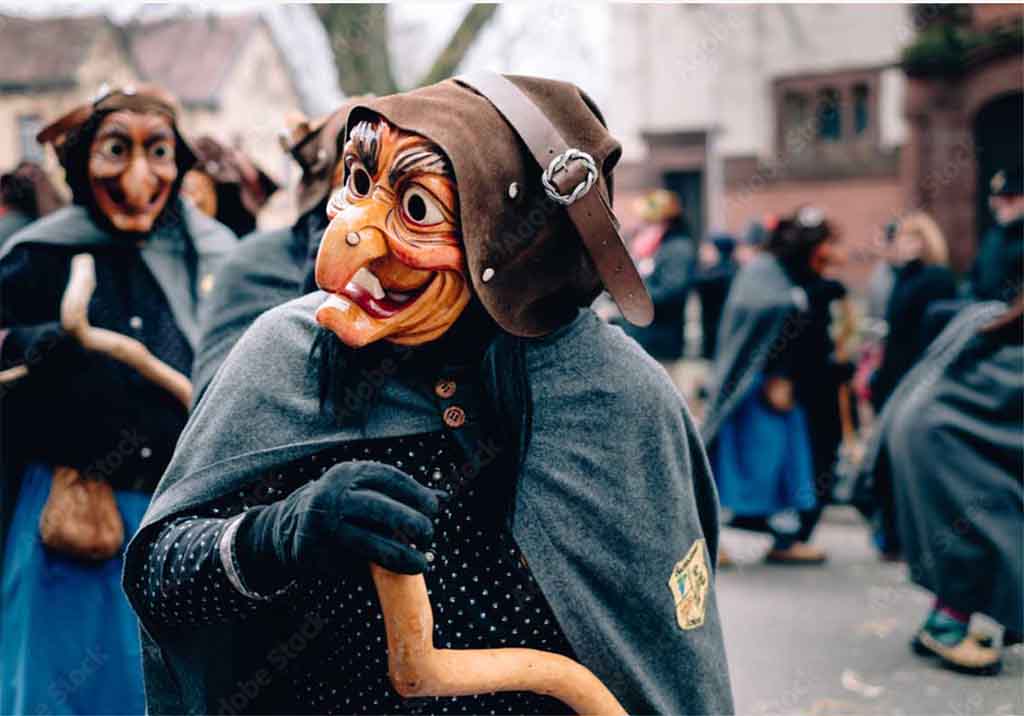
The name “Befana” comes from the celebration of Epiphanias (Italian: Epifania), the day the three kings arrived and told of the birth of Jesus Christ. Legend has it that Befana learned the joyful message from the three holy kings Kaspar, Balthasar and Melchior and wanted to visit the newborn child. The star of Bethlehem was supposed to show her the way but once it had extinguished she could not find the child. Ever since the Befana has kept flying from one child to the next in the hope to find the holy child.
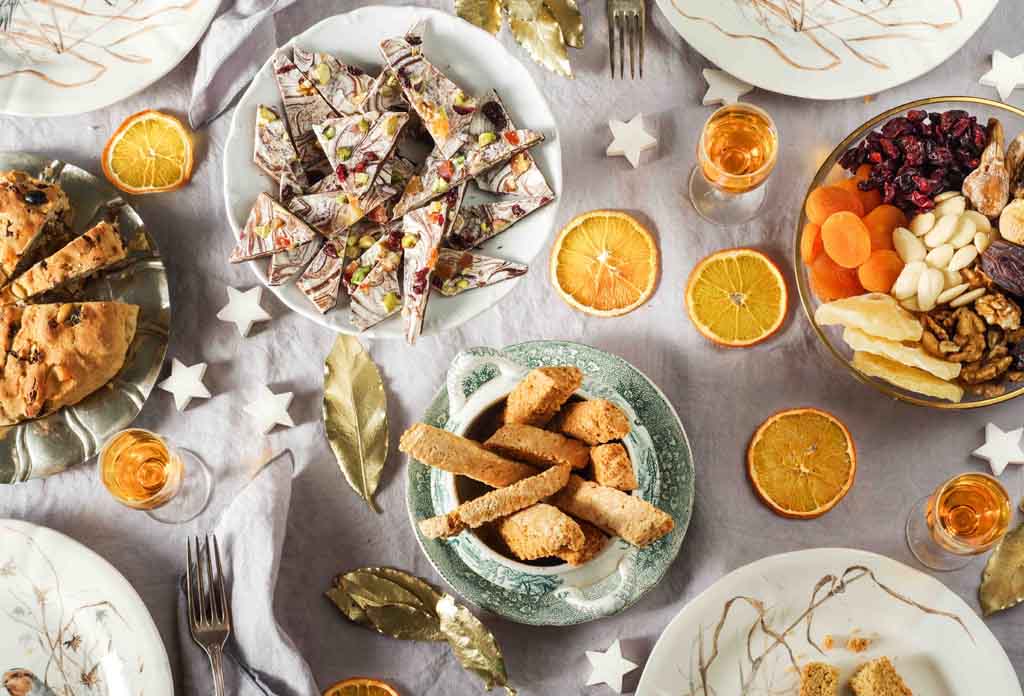
On Christmas eve light meat free food is usually served such as clear soup and cabbage. With the midnight mess Christmas has officially begun and presents are handed out on 25th December. It is only then that the food becomes richer.
Primi: Ravioli und Natalini
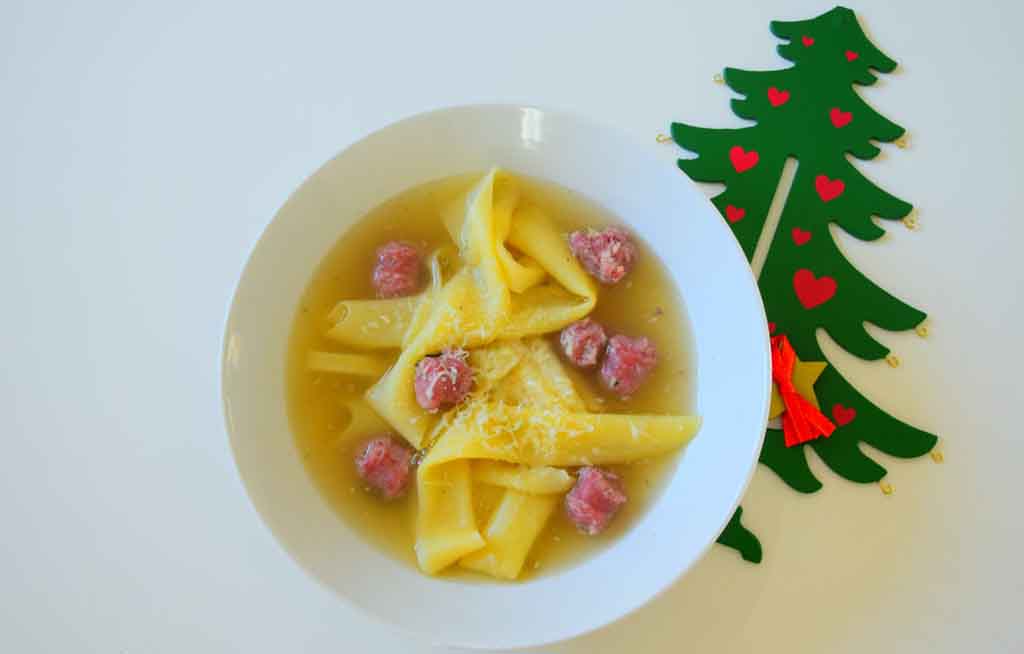
Two starters used to have their place firmly on the Christmas menu. One was the “Nataliij in Brodo”; long soft penne cooked in vegetable broth, which has almost been forgotten about and the “Ravioli tocco alla Genovese” or “Ravioli u tuccu zeneize”, which is a traditional sauce in the Genovesan cuisine cooked with “tocco” made out of meat and tomato sauce. The meat is cooked until it is very soft.
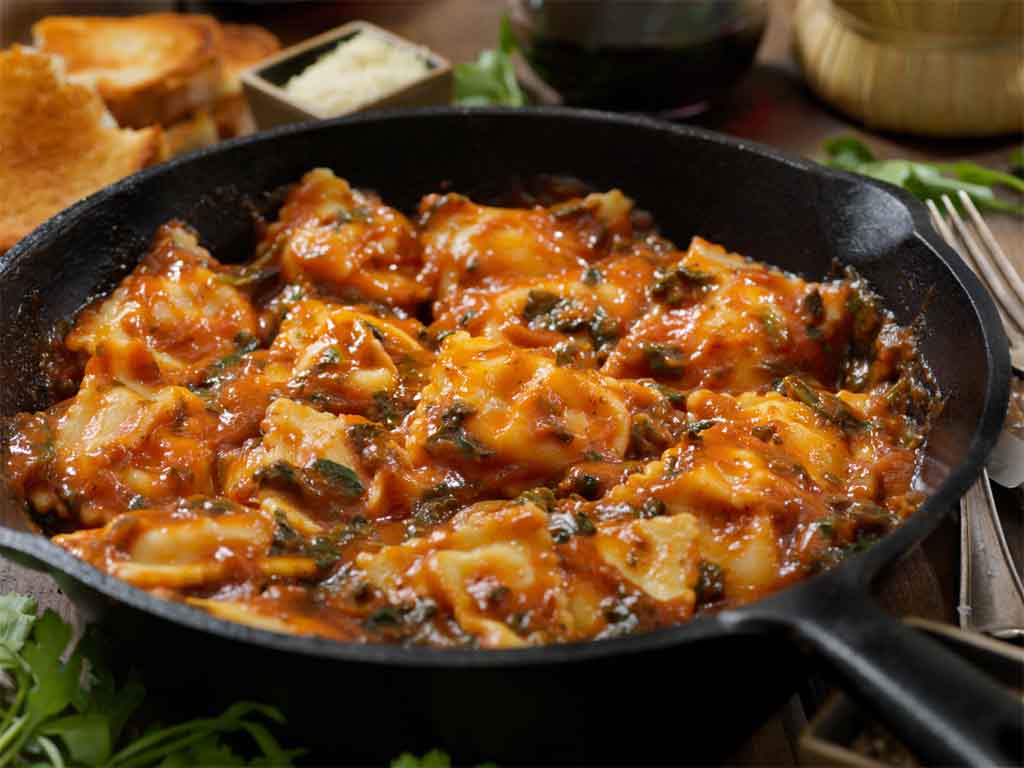
The remaining gravy gives the tomato sauce a particularly savoury flavour. This dish can still be found on many Christmas menus.
Secondo: “Capponmagro” – from poor people’s dish to sought after delicacy
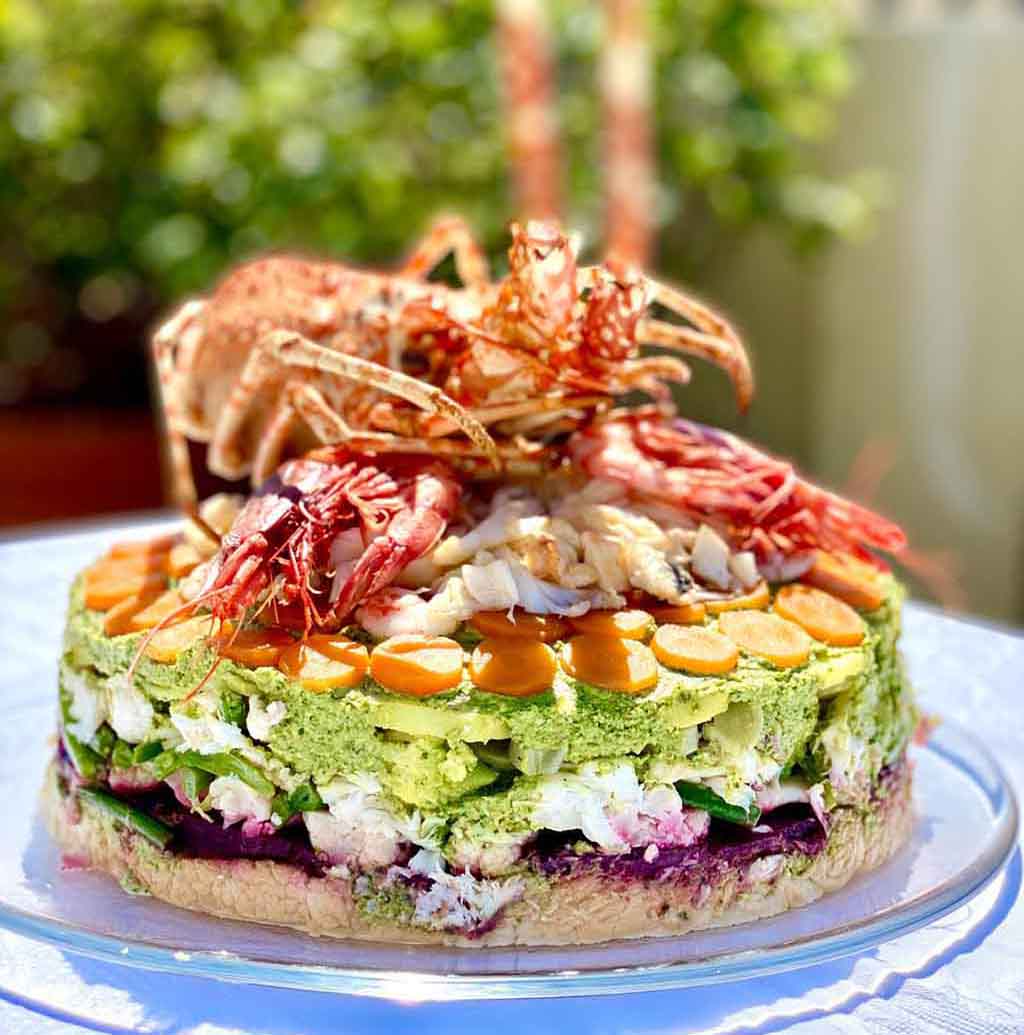
Traditionally the main course on the Christmas menu has been the cooked ‘cappon”, a large some 12 year old castrated rooster with particularly tender meat served with vegetables and various sauces.
During tough times the rather expensive rooster was omitted and the dish was labelled as poor man’s food, “capponmagro”. This is a terrine made with white fish such as sea bass, sea bream or cod, vegetables like beetroot, cauliflower, artichokes, galettes and salsa verde which is a sauce made of parsley, capers and olives. The different alternating layers were then put into a terrine dish.
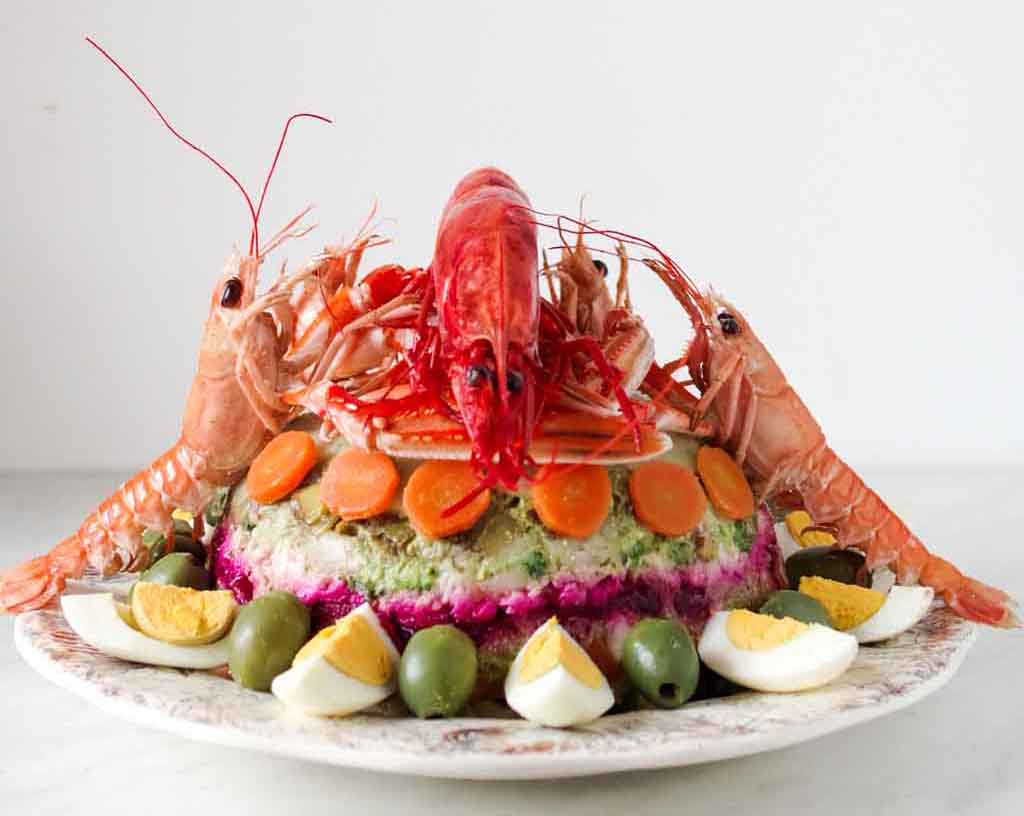
By now the “capponmagro” to which sometimes shellfish is added, has become a speciality you will only find in selected restaurants and delicatessen shops.
Secondo: “Cima alla Genovese” – Ligurian Veal Belly
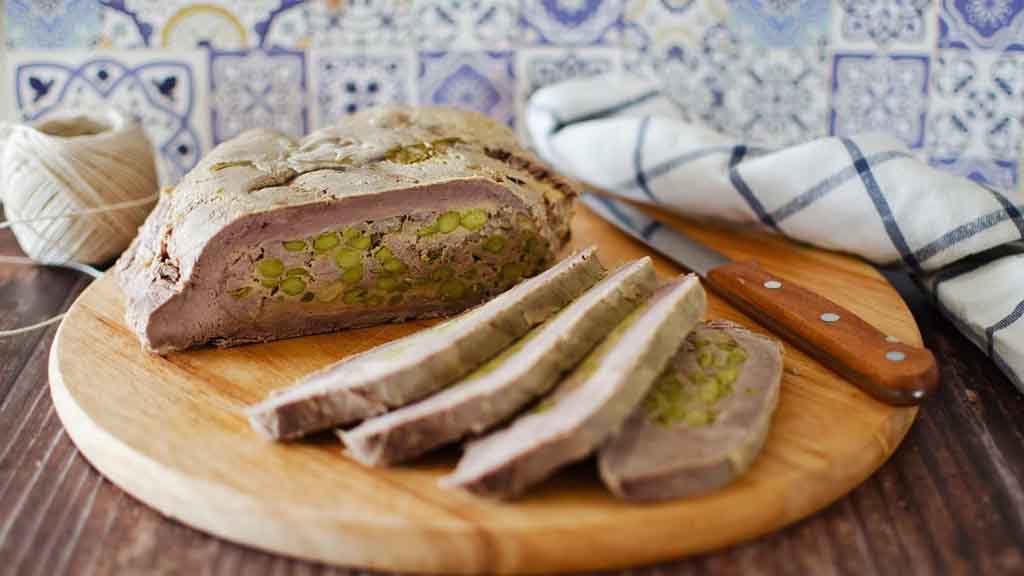
The cima alla Genovese known in Liguria as “cimma” is a typical main dish and is a cut of calve belly with a pocket stuffed with various ingredients. To mention just a few, there is calve meat, eggs, garlic, herbs, vegetables, Parmigiano Reggiano which when combined give the dish a unique flavour.
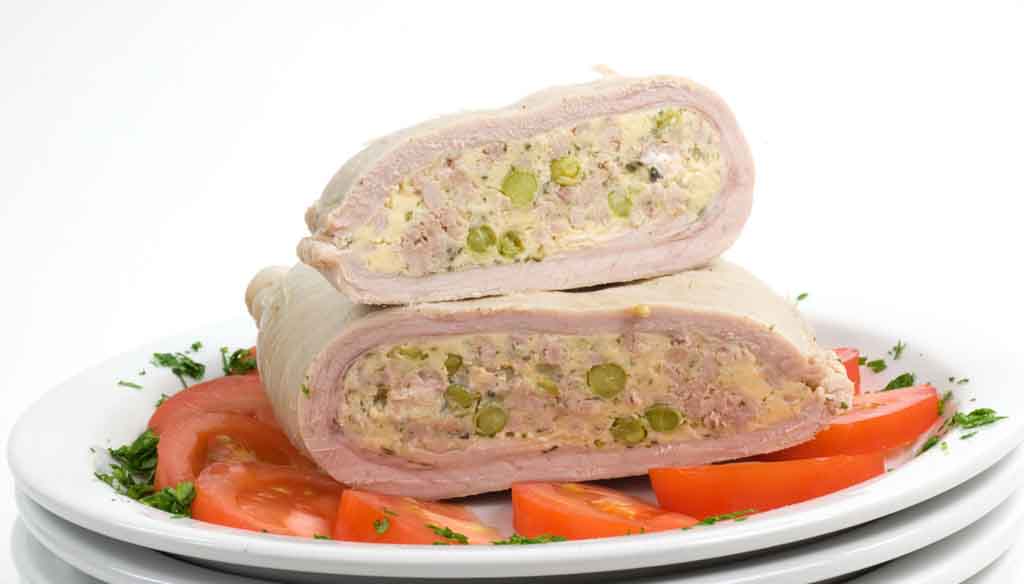
Once filled with all stuffing, the pocket is sown by hand which requires careful handling so the stitching stays in place throughout the cooking process. The veal belly is wrapped into a linen cloth and cooked in vegetable broth for a few hours. Once rested and cooled down, the meat is cut into slices and served. The slices look attractive thanks to the now visible stuffing, called “oggiu” (eye) in Liguria.
Il Dolce – the “Pandolce Genovese” to finish
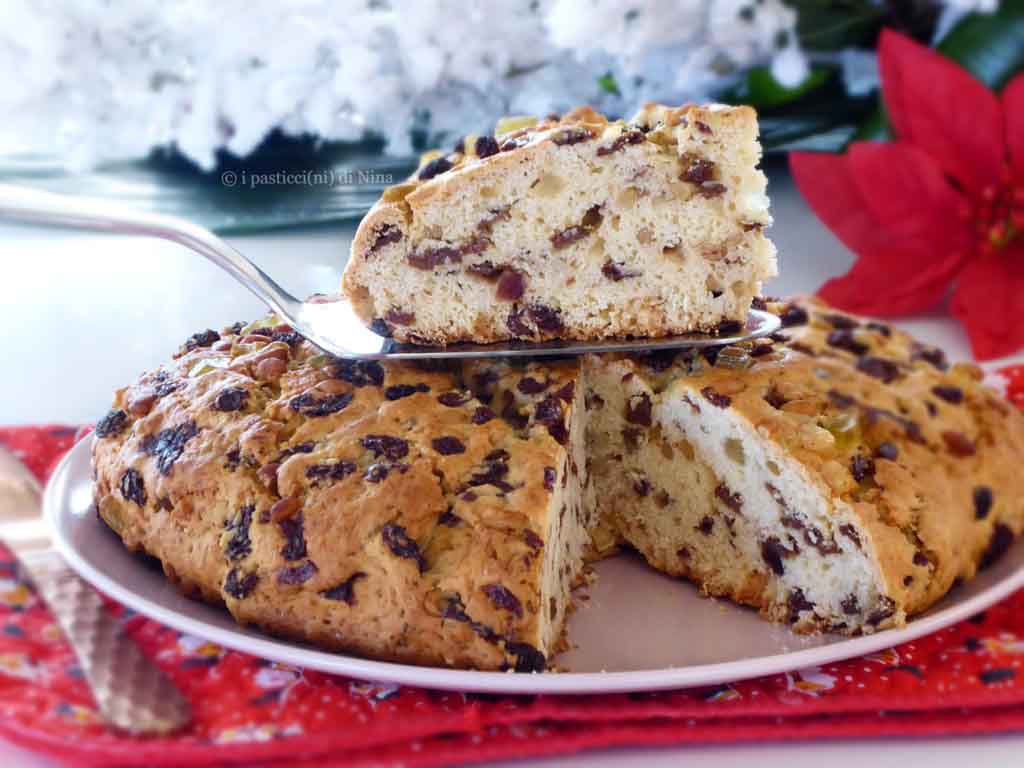
The traditional Ligurian Christmas cake is called “pandolce”, not to be confused with Panettone or Pandoro from Lombardy and Milano. The “pandolce” is made of a thin dough filled with sultanas, candied lemons, pine kernels (never to me missed in a Ligurian recipe), orange water and Zibibbo. It keeps for a long time and can be found throughout the year in Liguria simply because it is so delicious.
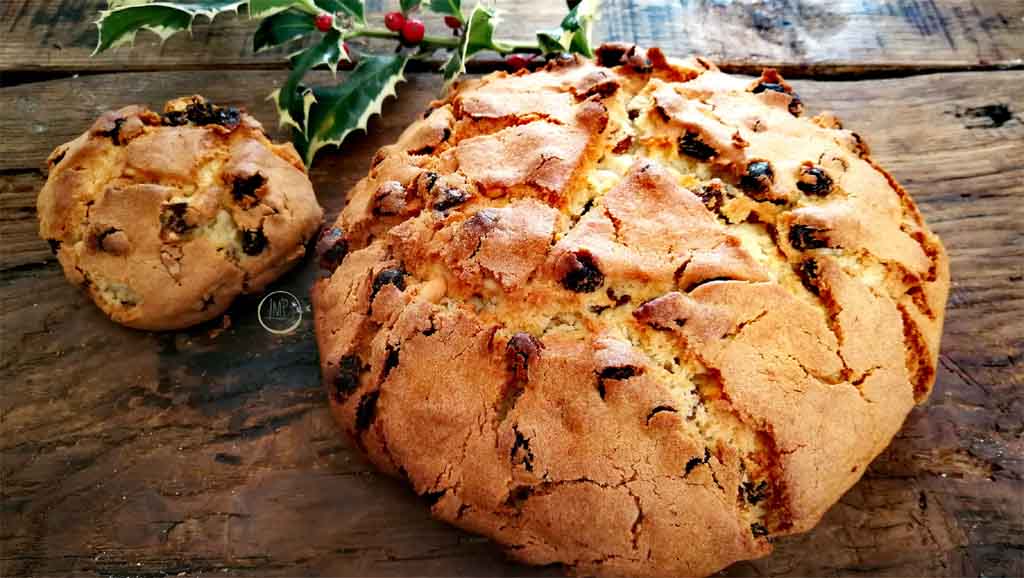
According to legend the Pandolce dates back to the 16th century when the Doge Andrea Doria called for a baking competition to create a cake representing Genova. The winner was the Pandolce as it is nutritious and keeps for long time making it perfect for seafarers.
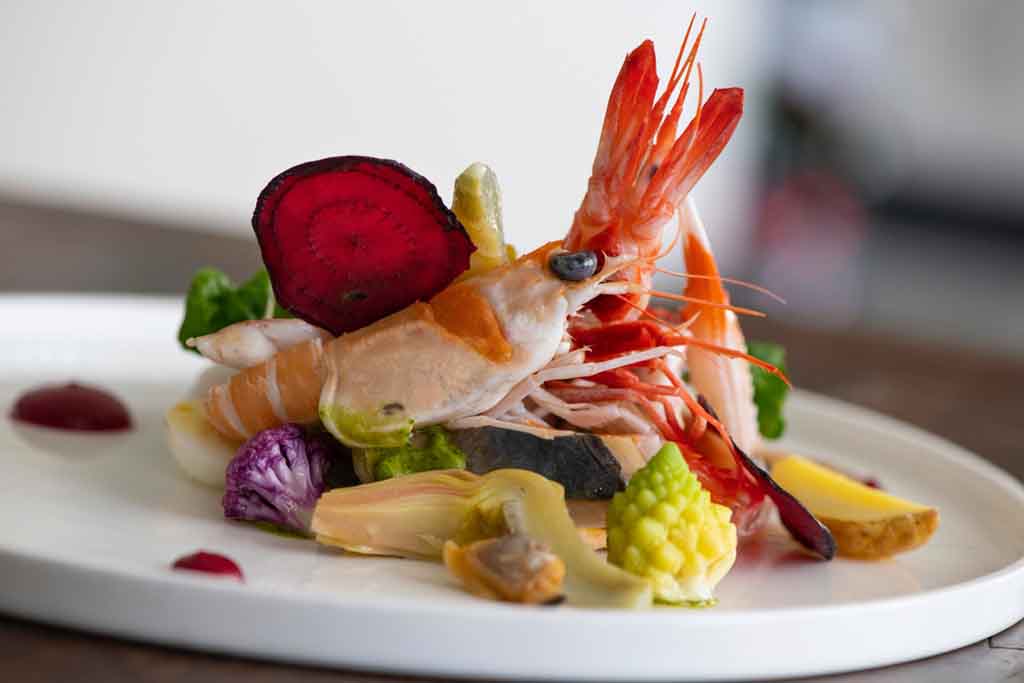
If you enjoyed our chapter on traditional Christmas Menus, why not try the more elegant version of “Capponmagro”?
“Capponmagro” – the King of Seafood Salads
If you want to make a “Capponmagro” we recommend planning a few days in advance as it is quite laborious.
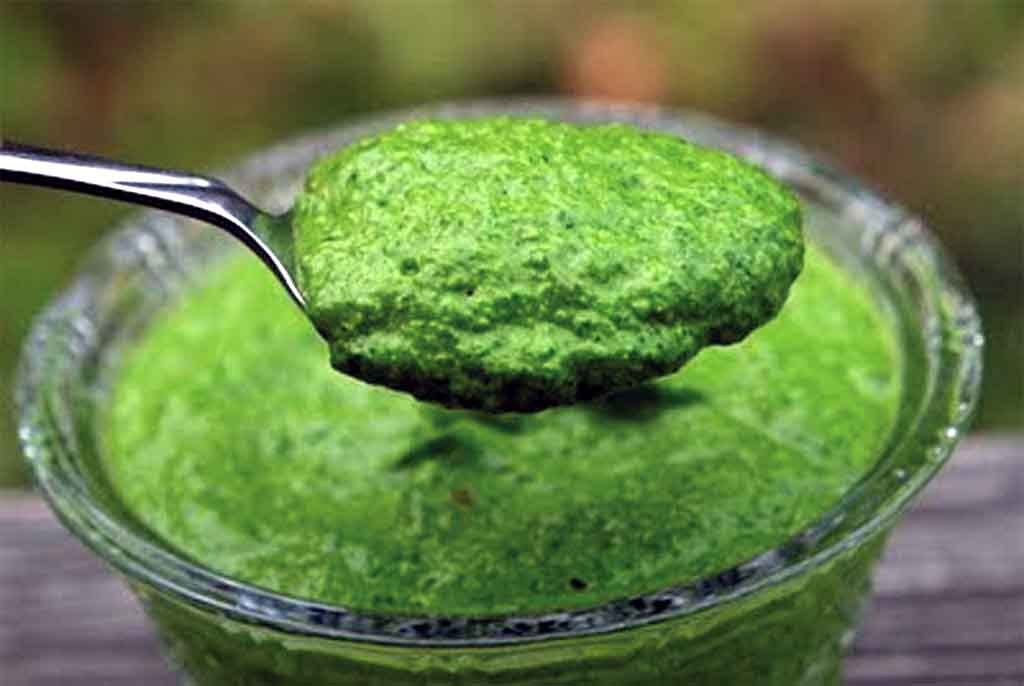
Ingredients for the green sauce:
- 50 g breadcrumbs
- 70 g parsley (leaves of roughly two bunches)
- 1 garlic clove
- 40 g capers, rinsed
- 80 g pine kernels
- 3 hard boiled eggs, egg yolks only
- 4 salted anchovy filets, rinsed
- 8 pitted olives
- 12 table spoons native olive oil
- 3 table spoons vinegar (more to moisten the bread)
- 1 pinch of salt
You should start making the green sauce a day ahead; it contains vinegar and will keep in the fridge for a few days.
Moisten the breadcrumbs with vinegar, let dry and squeeze out the liquid. Wash and dry the parsley leaves. Add the breadcrumbs, 4 tablespoons olive oil, 1 tablespoon vinegar, pine kernels, half the parsley and garlic to a bowl and pulse until you have the consistency of a cream. Then add the remaining parsley, egg yolks, capers, anchovies, green olives and another 4 tablespoons of olive oil. Pulse again. Now add 1 spoonful of vinegar and the remaining 4 spoons of olive oil and salt.
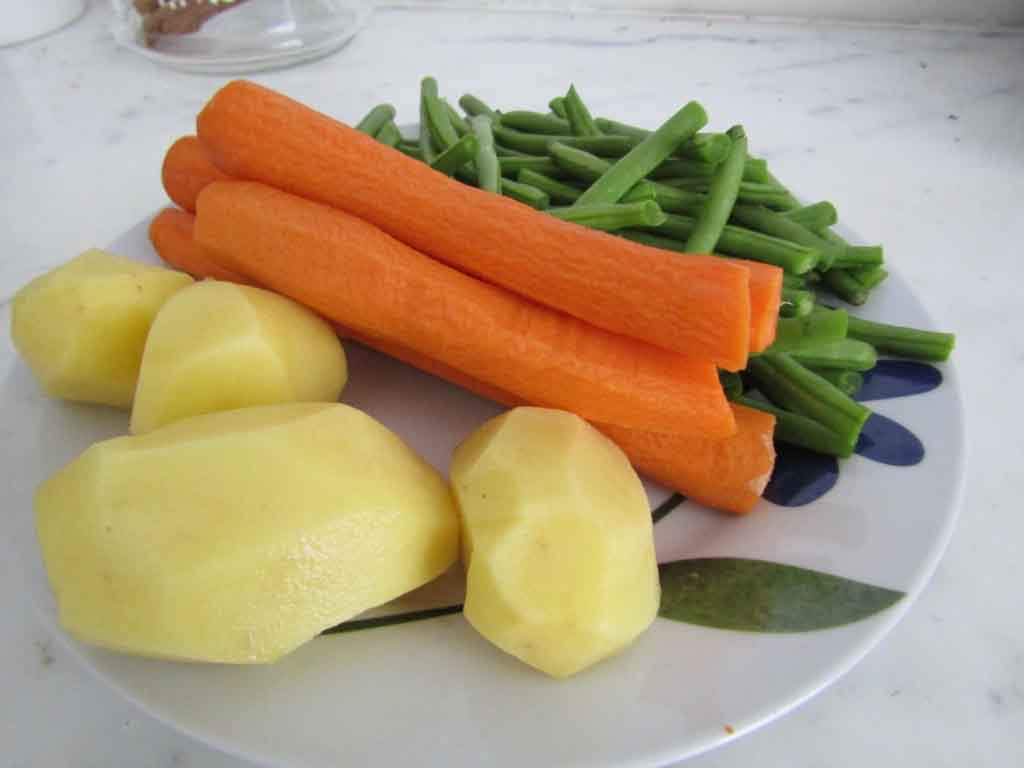
The salad:
- Vegetables for the salad:
- 2 carrots
- 1 broccoli
- 150 g green beans
- 2 medium size potatoes
- 4 artichokes
- 1 beetroot
- 5 crackers or 5 slices stale bread
- Lemon
- Oil
- Vinegar
- Salt
Method:
Place the crackers or bread between two dishes, add the liquid (half water, half vinegar), add a pinch of salt and let it sit.
Cut the carrots into quarters, remove the broccoli form the stem, cut the beans, peel the potatoes but leave them whole. Prepare the artichokes and cut into quarters, then into slices and cover with water and lemon juice. Wrap the beetroot in baking paper and roast in the oven for 40 minutes at 200°C.
Cook all the vegetables separately until all dente; then refresh with ice cold water so they keep their colours.
Then cut the vegetables into slices, cubes or sticks, dress with oil, vinegar, salt and let it cool.
Cut the carrot in thin slices and leave as decoration.
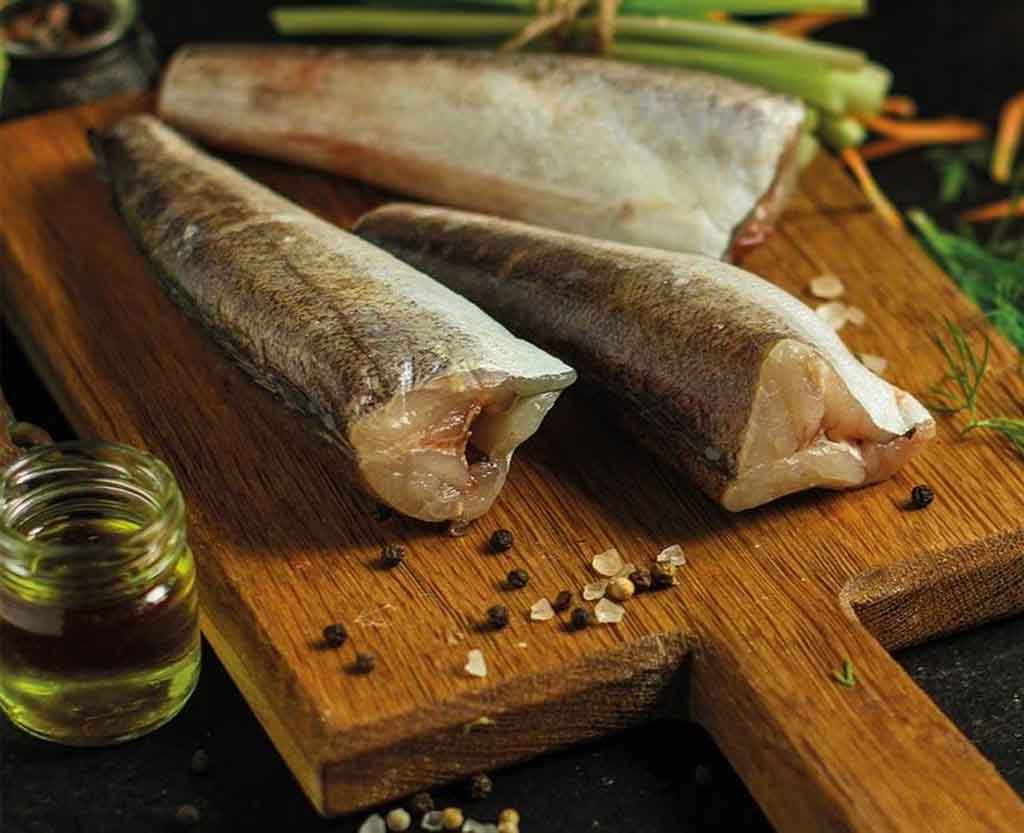
Ingredients for the fish:
- 1 kg fish for steaming, such as hake, sea bass or cod
- 1 medium size octopus
- 12 shrimps
- Oil
- Salt
- Lemon
Steam the fish in a suitable pot; clean and cut into small pieces. Season with oil, salt and lemon and put aside.
Cook the shrimps, peel and cut into small pieces. Season with oil, salt, lemon and put aside.
Putting the salad together:
Take a deep round dish (approx. 20 cm in diameter), line the dish with cling film and make sure you have an overhang.
Place the ingredients in layers into the dish and some of the of green sauce between each layer of fish and vegetables. Make sure each layer is evenly and densely packed. You can add the layer to your own liking. End with a layer of crackers or breadcrumbs.
Fold the overhanging cling film over the final layer of bread/crackers and place the bowl int the fridge for 1-2 hours.
Finally remove the bowl from the fridge, open the overhanging cling film.
Place a serving dish on the rim of the bowl and with a swift movement turn over the bowl. Gently pull on the cling film to loosen the salad before gently lifting the bowl.
You will now find a beautifully layered and colourful dome on your serving plate, ready to be decorated.
Leave some green sauce on the side for serving.
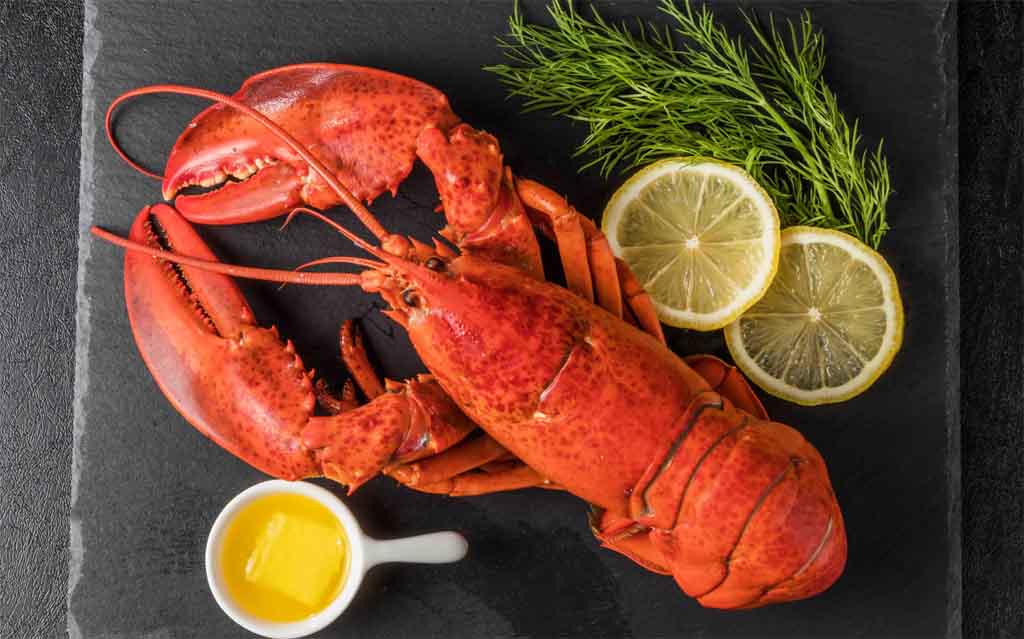
Decoration:
- 1 lobster or langostino
- 5 scampi
- 20 clams or oysters
- 4 hard boiled eggs
- 20 pitted green olives
- 1 carrot
- Salt
Method:
Fry the scampi in a frying pan and keep whole.
Cook the lobster (I have used a whole Argentinian Langostino) and keep whole.
Steam the clams in a pan with lid on for 5-10 minutes. Once open you can remove the flesh from the shells and use as decoration.
If you want to serve oysters, pen them only a few minutes before serving.
Blanche the carrot, refresh with ice cold water and cut into thin slices. Season with salt, lemon juice and oil.
Slice the olives, quarter the eggs.
Decoration and Serving:
There are no rules for decorating and you can be as creative as you like please.
Keep the “capponmagro” in the fridge and remove some 2 hours before serving so it reaches room temperature. Put the remaining green sauce on the side.
Enjoy!
Tip:
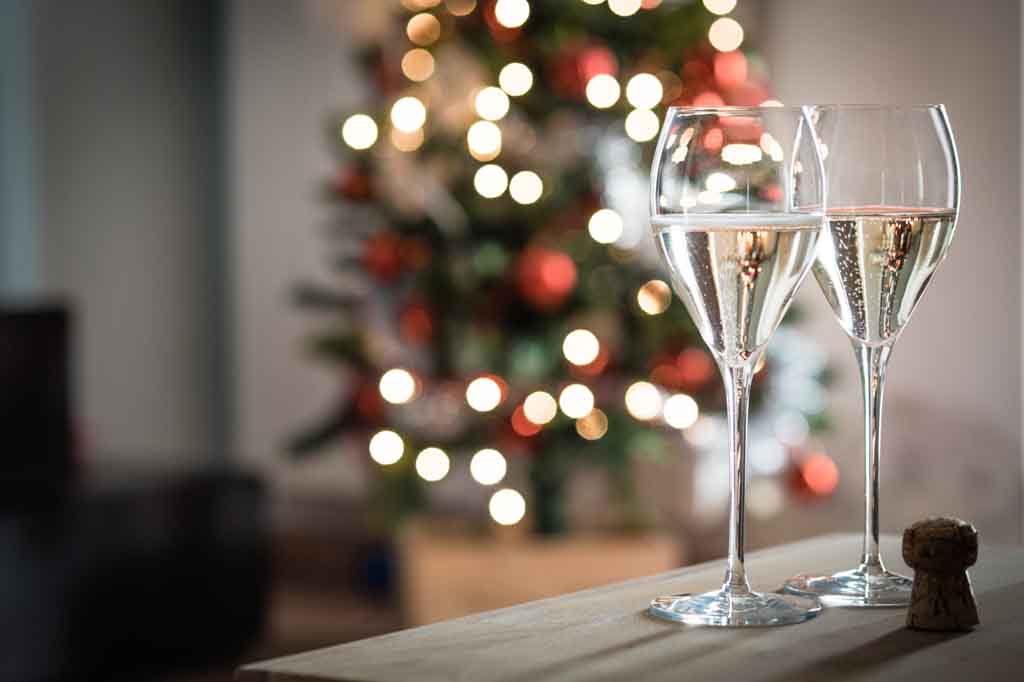
Gulio F56 – traditional method – La Baia del Sole
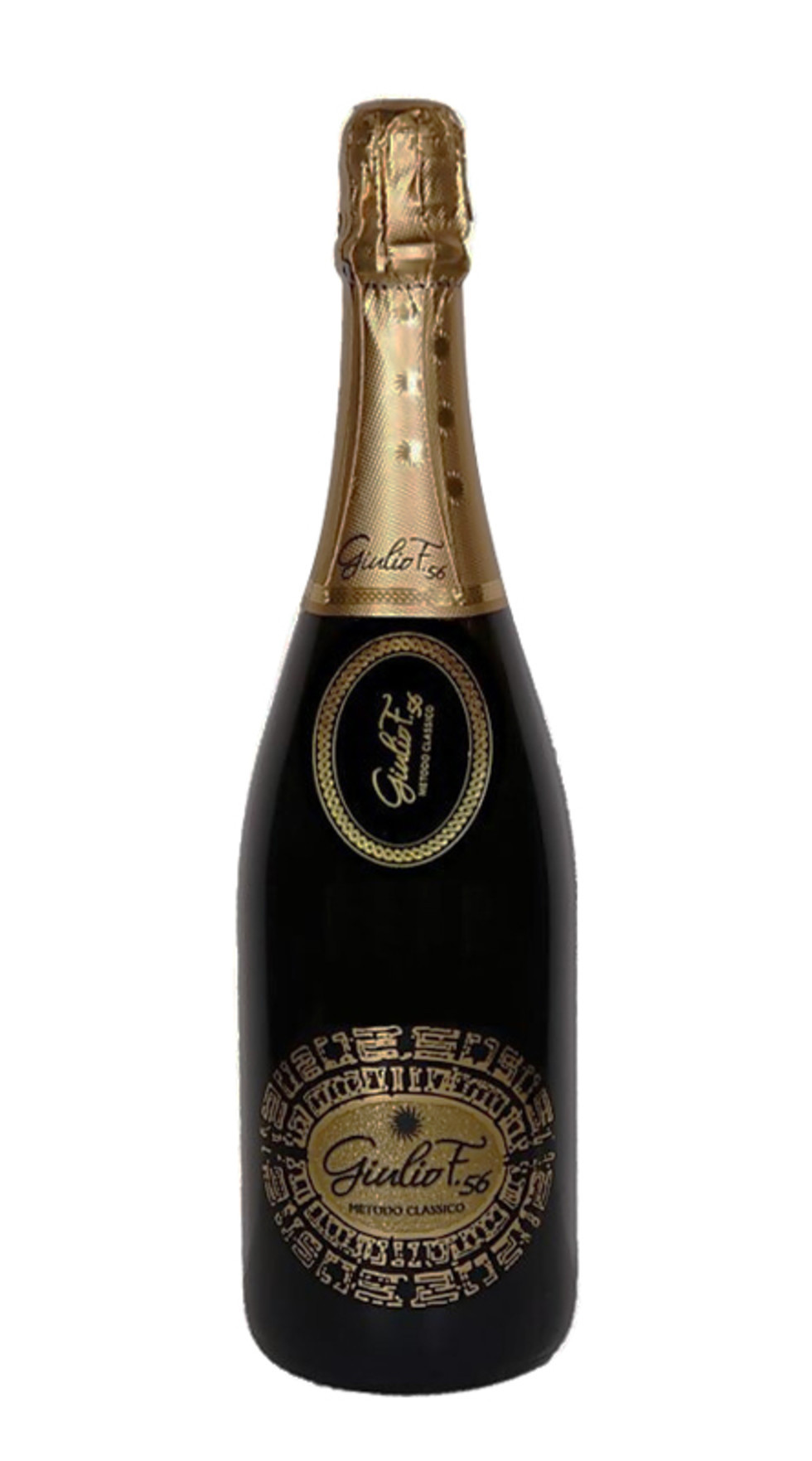
It feels creamy on the roof of the mouth, fresh and lively, soft and balanced with a good almond tasting finish. A perfect wine to go with your “Capponmagro”.
This sparkling wine is only made of Vermentino grapes and matures for six months in oak tree barrels. The second fermentation takes 24 months on yeast. A bright golden yellow, lively sparkle, intense bouquet and fruity aromas (citrus fruits and apple), Mediterranean herbs, bread crust and gently minerals.
For more information on the Cantina follow this link:
https://www.cantinefederici.com
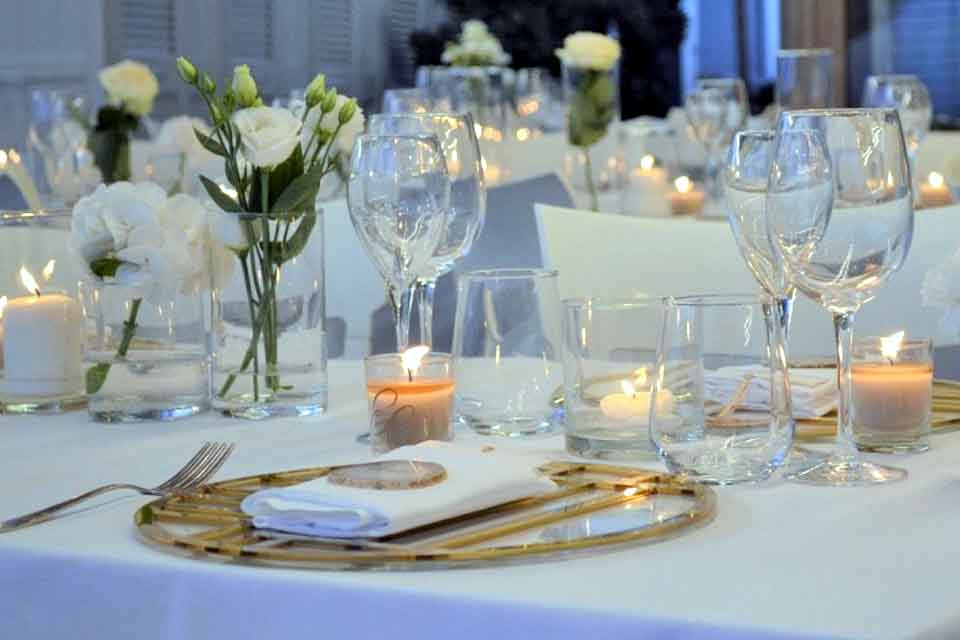
As mentioned before, there are only a few selected restaurants still serving the traditional Ligurian “capponmagro”. We recommend the restaurant “Amarea Romolo Mare” in Bordighera. Here you can pre order and savour this unique dish. But the Amarea situated on the peninsular of Capo Sant Ampelio with stunning views over the sea is always worth a visit. It combines a relaxed atmosphere with elegant ambience and serves as a beach bar during the day and gourmet restaurant in the evening. Even in winter the climate is mild enough to use the beach surrounding the restaurant.
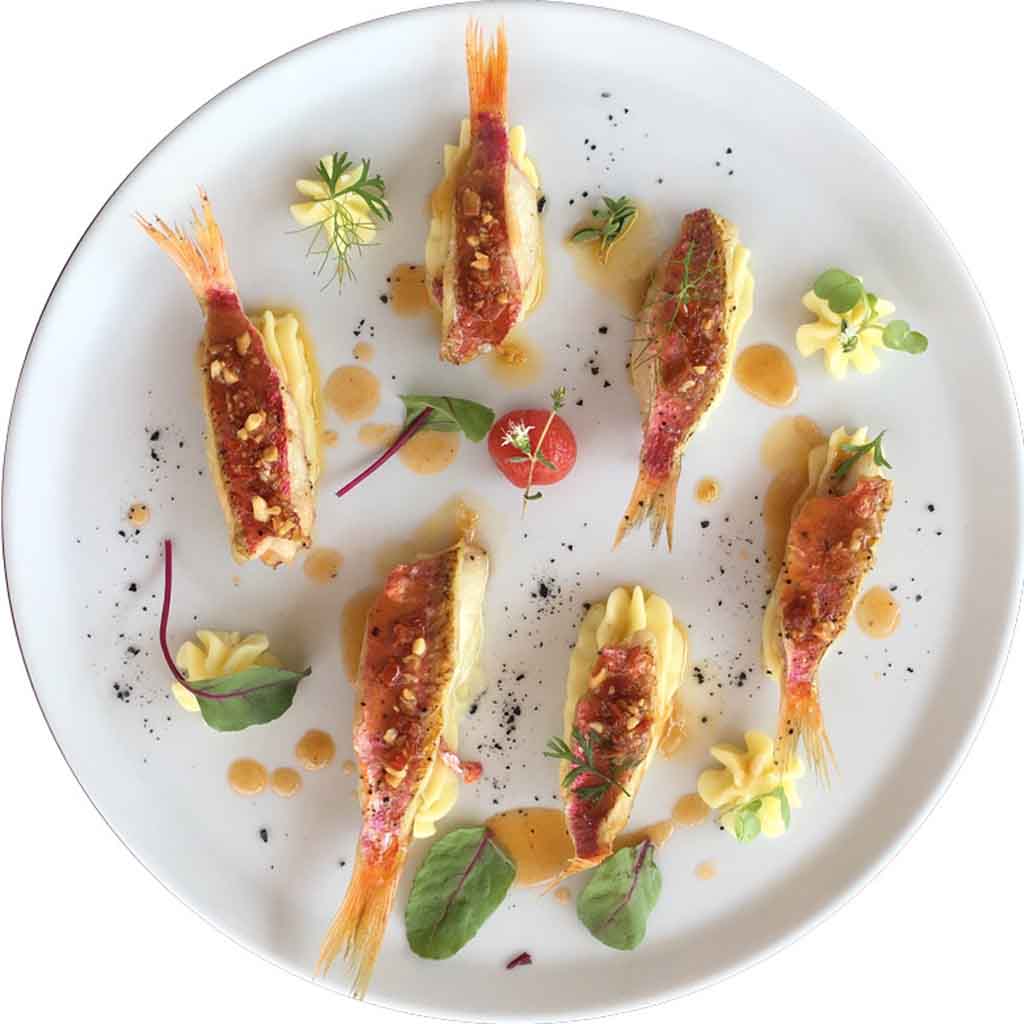
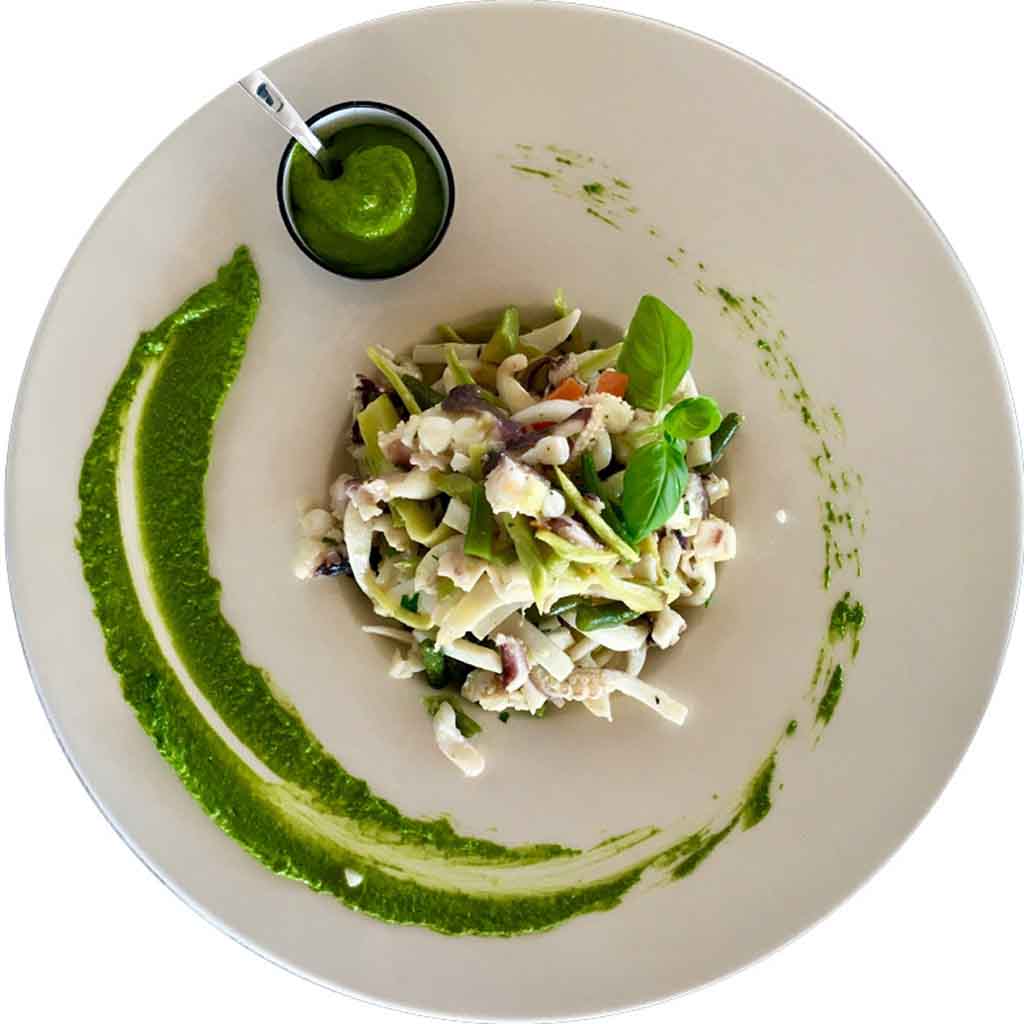
In December 2008 Romolo Giordano came to this special place and immediately fell in love with it. Together with his top chef Nadi Rakipi, he combines traditional Ligurian dishes with an exciting new twist. The kitchen team carefully selects only the best regional produce delivering in quality, freshness and authenticity. These ingredients are the turned into excellent meals such as tuna tartar with beans and trombetti, brandacujun, carpaccio with zucchini strips and mousse. The desserts like mousse ciococolato with araguani chocolate are very popular with the guests.

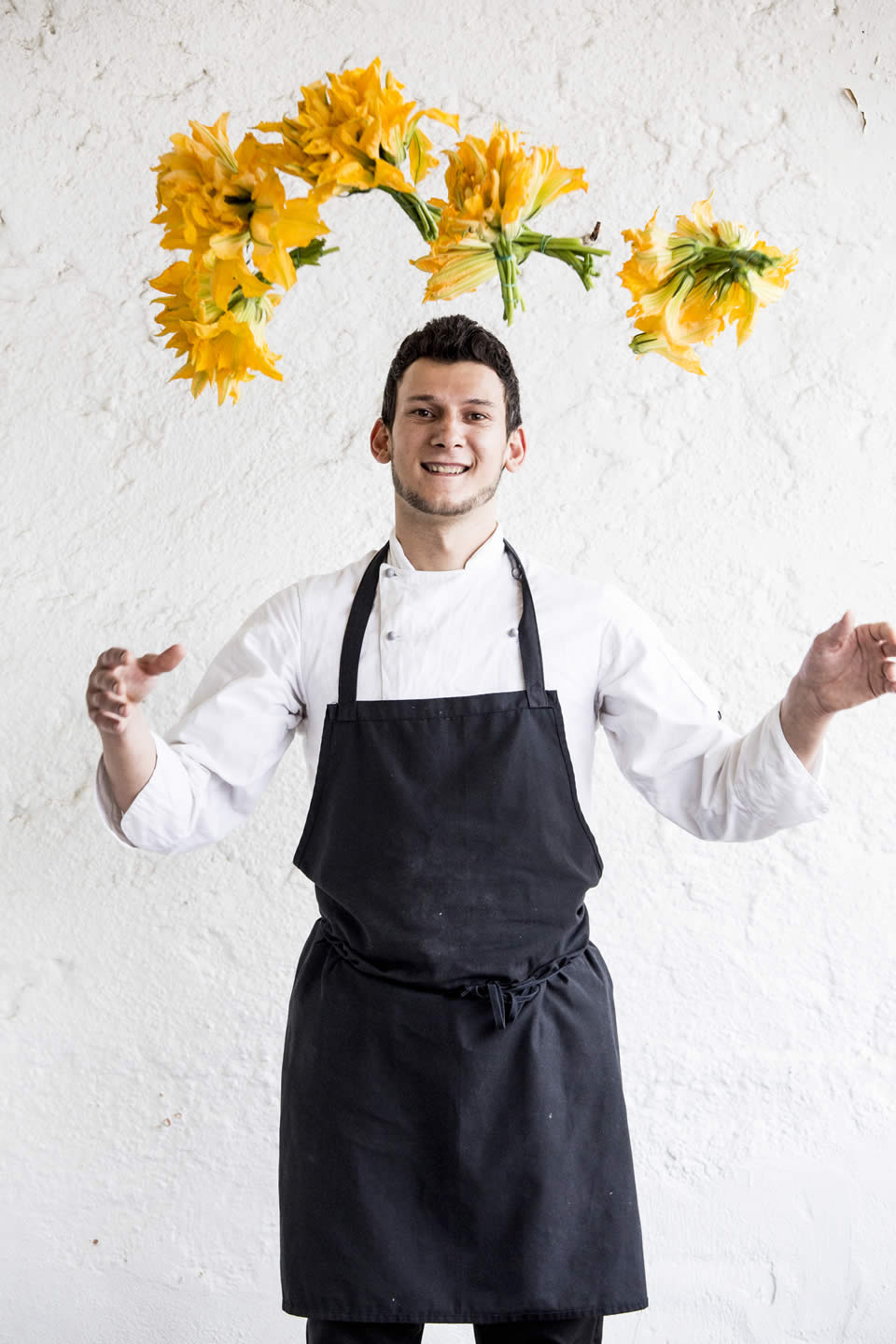
The friendly service always strives to accommodate the wishes of the guests and if lucky, you may find a table when visiting spontaneously.
We do recommend however to reserve in advance, in particular if you wish to try a “capponmagro”.
Amarea Bordighera
Lungomare Argentina, 1
Bordighera (IM)
Email: monica@amareabordighera.it
Web: https://www.amareabordighera.it
Telephone Beach: (+39) 3929202837
Telephone Restaurant: (+39) 0184 261105
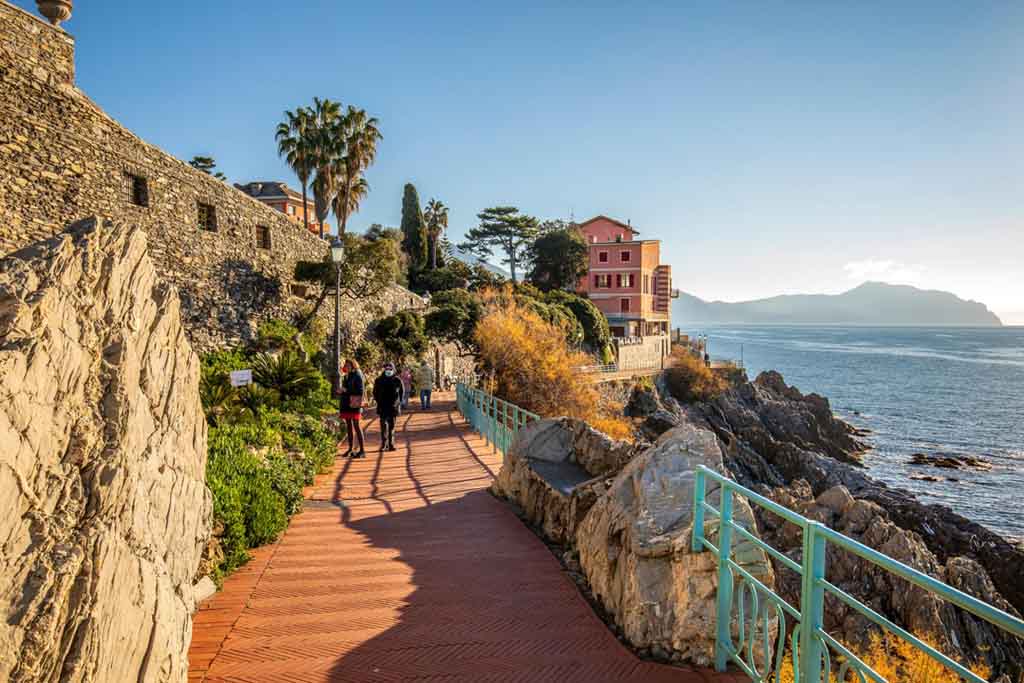
Even in winter you can go for beautiful walks in Liguria. One suggestion would be to walk the promenade of poets and Genova and surroundings.
Nestling between the small seaside port of Nervi and Capolungo and lst and most easterlypart of Genova lies the romantic beach promenade Anita Garibaldi. A stretch with stunning views over the sea which you should not miss.
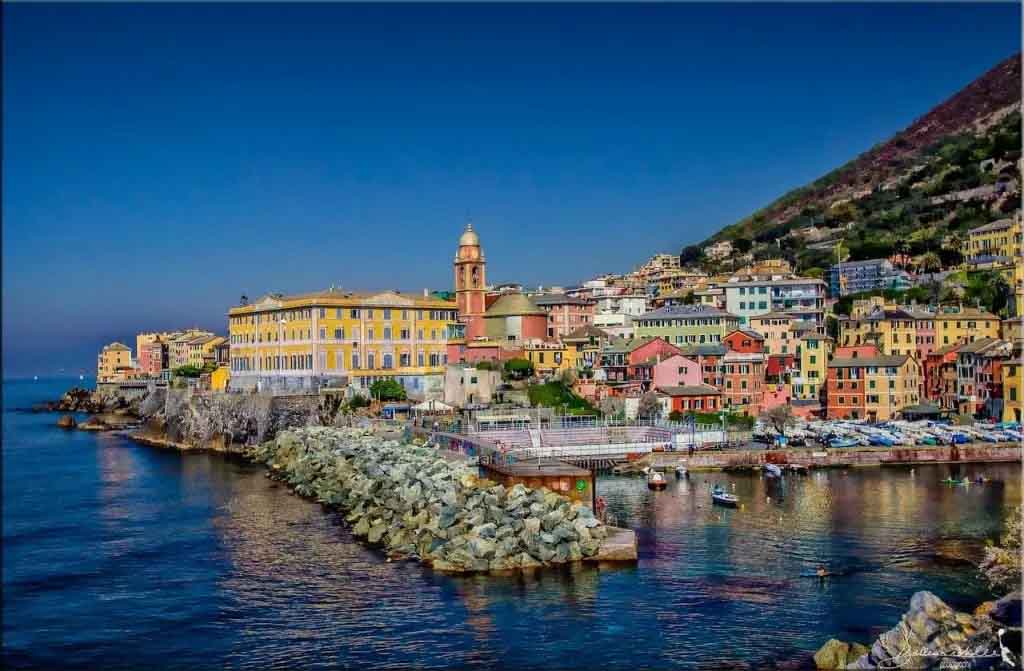
The village Nervi is siutated on a cliff and the recently renovated small port was given a new amphitheatre on the sea. The port is littered with small restaurants serving cocktails, donuts and focaccia with cheese. Beyond the port follows a two kilometre terracced promenade called Anita Garibaldi with views over the sea. From here you can witness spectular sunsets.
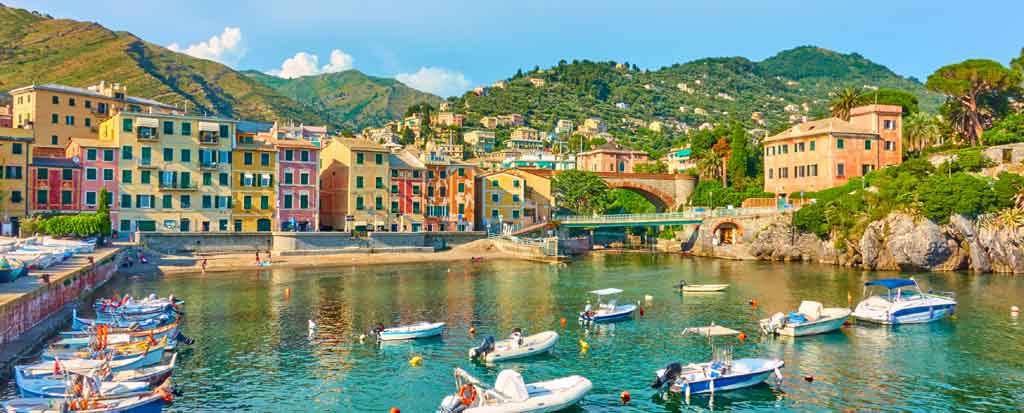
The first stretch oft he promenade gives views over the scenic Porticciolo di Nervi and the foothills of Portofino. On clear days you can even spot Corsica in the distance. Further on you will encounter the Gropallo Tower dating back to the 16th century and the hay tower formerly used by farmers. The backdrop is he Nervi Cliff giving various places of access to the sea.
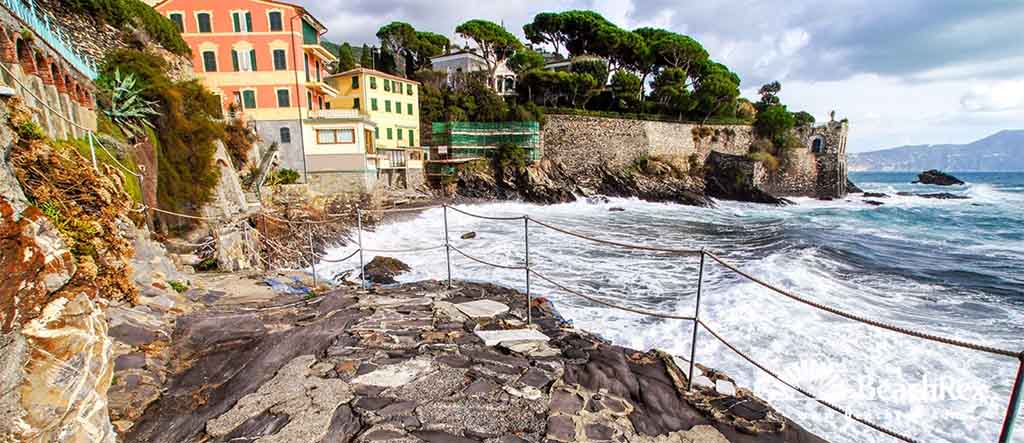
You will finally reach the coastal village Capolungo with ist beautifully sheltered beach. A short ascend in Capolungo leads tot he old train station of Sant“llario which became immortal with the song „Bocca di Rosa“ by Fabrizio De Andre
La Foce – The Promenade of Lovers
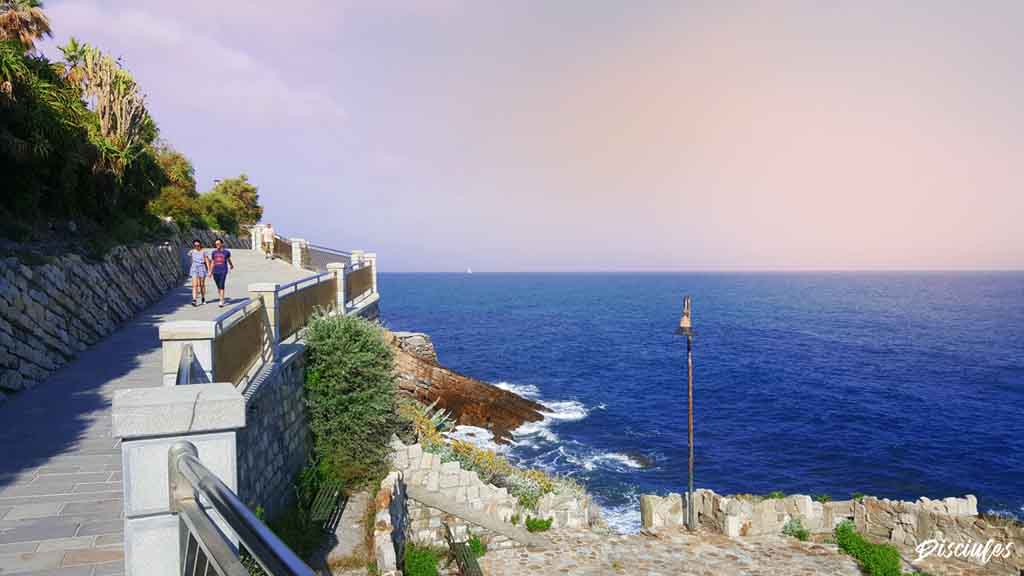
La foce ist the promenade along which the Imperia’s inhabitants like to go for a stroll between the blue sea and the pastel coloured slate and stone houses on the „Passeggiata degli Innamorati“ from Borgo Foce to Borgo Marina. Along the way are many cafés overlooking the sea. A perfect place where to meet for an aperitif or savour the local dishes with a glass of crisp white wine whilst absorbing the salty air and scents of flowers.
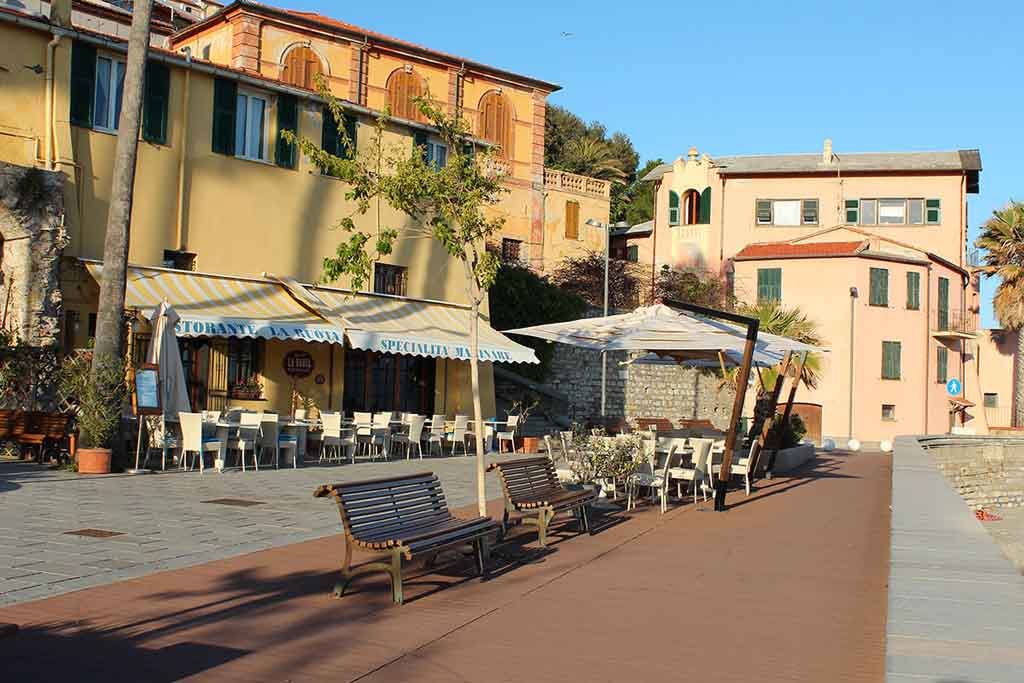
The ancient fishing village Borgo Foce is located at the mouth oft he gushing river Carmagna at the foot oft he west facing hillside Parasio. The small port is named after the old seafarer Emanuele Aicardi and has been well maintained. Small fishing boats like the typically Ligurian Gozzi moor in the port until pulled ashore fort he winter months.
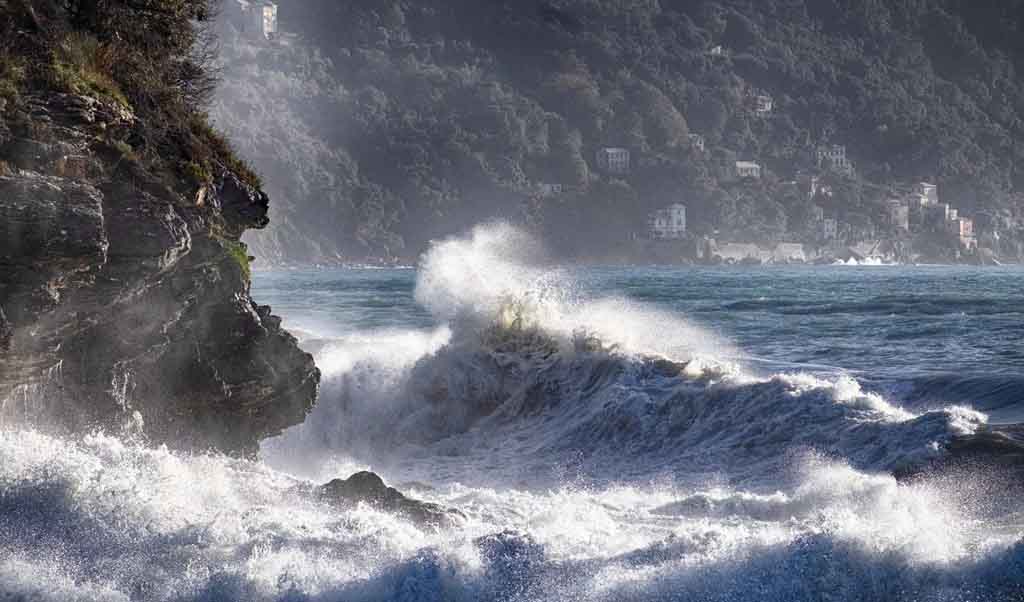
On stormy winter days the waves lash out at the coast and one can picture the antique boats waiting to reach the safe shores. In winter the waves can still come up tot he fishing houses located close tot he sea.
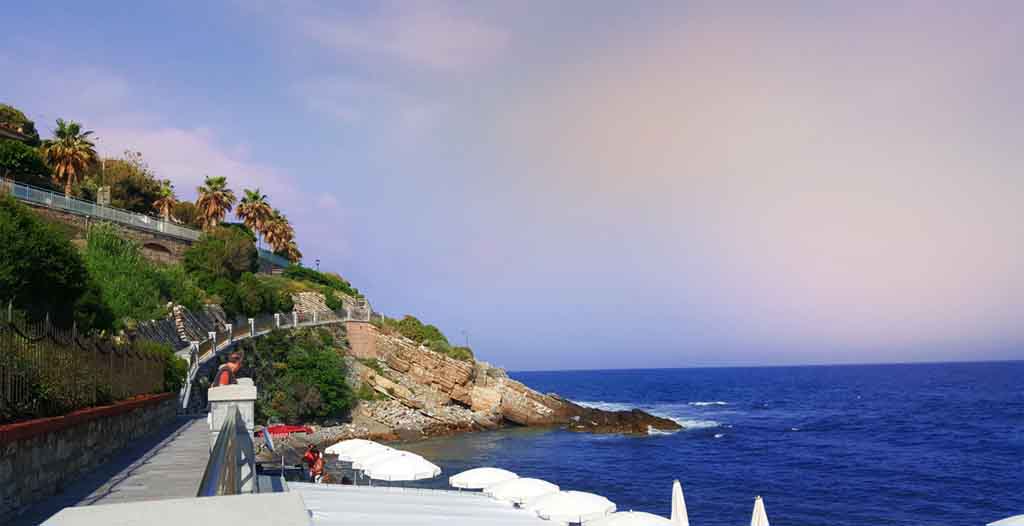
In summer the sea is usually calm and the bay invites for a swim in the emerald green water or a snorkeling expidition to explore the bottom of the sea. And there’s alsways the option to just sit on the beach and enjoy the sunshine.
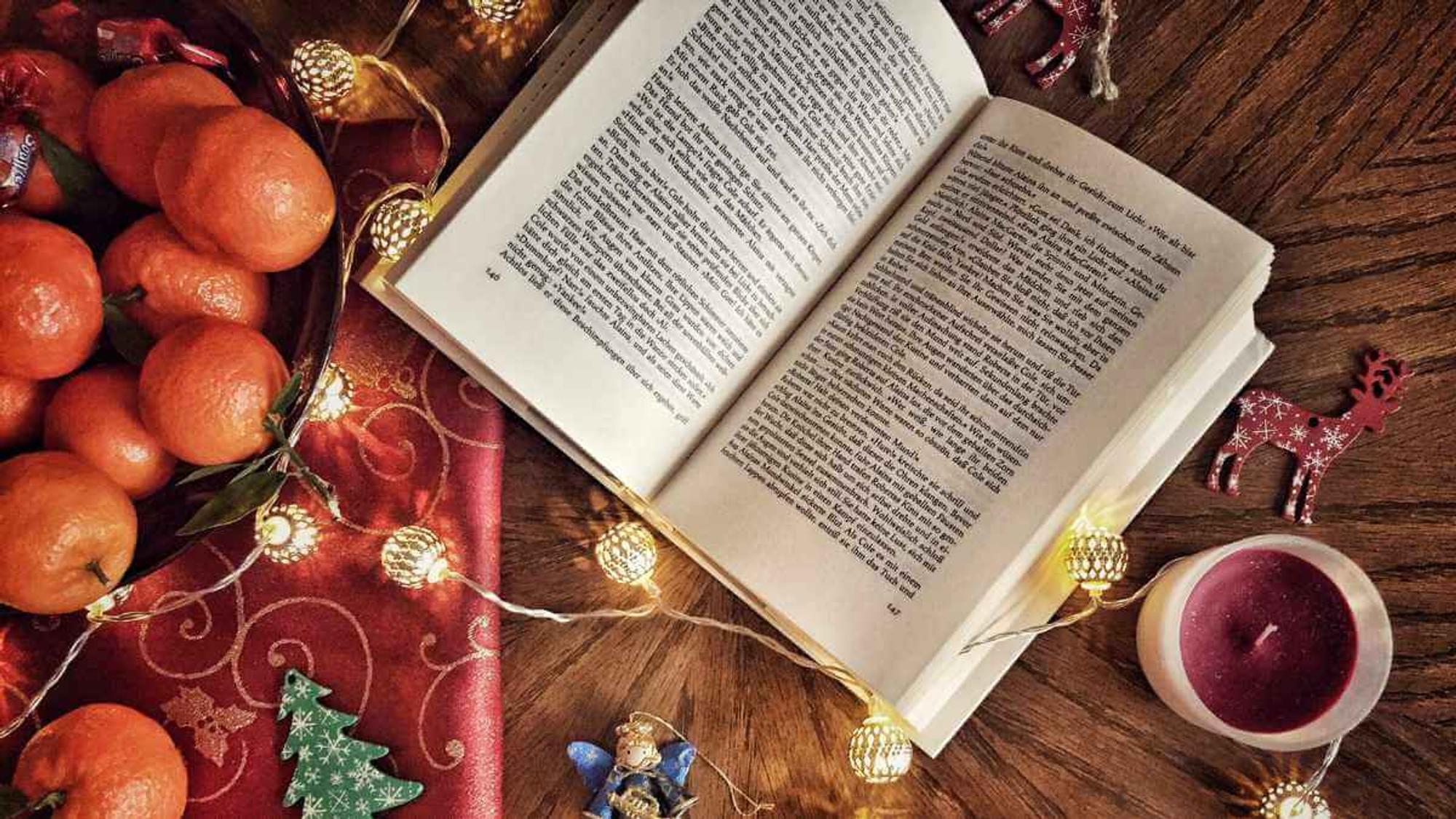
With the idea to shorten the winter period just a little bit, we would like to suggest a few books set in Liguria. You may well discover a new side to Liguria.
„Extra Virgin”
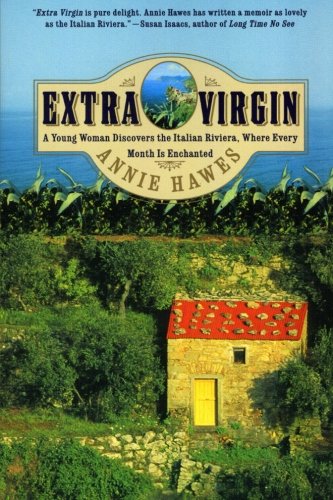
Annie Hawes and her sister were meant to swap grey London for sunny Liguria for the duration of olive harvest. But once they discover the old farmhouse in a most romantic spot they immediately fall in love with it and the planned 10 weeks of holidays turn into a life changing adventure.
You can find the book following this link:
https://www.awesomebooks.com/book/9780060958114/extra-virgin/used?gclid=CjwKCAiAmsurBhBvEiwA6e-WPGjEYn97DgX_Jh0UTMoExh2aAozXzwmHgwdaGYGrR98HS-7kgBZ2jBoC6qgQAvD_BwE
La Superba
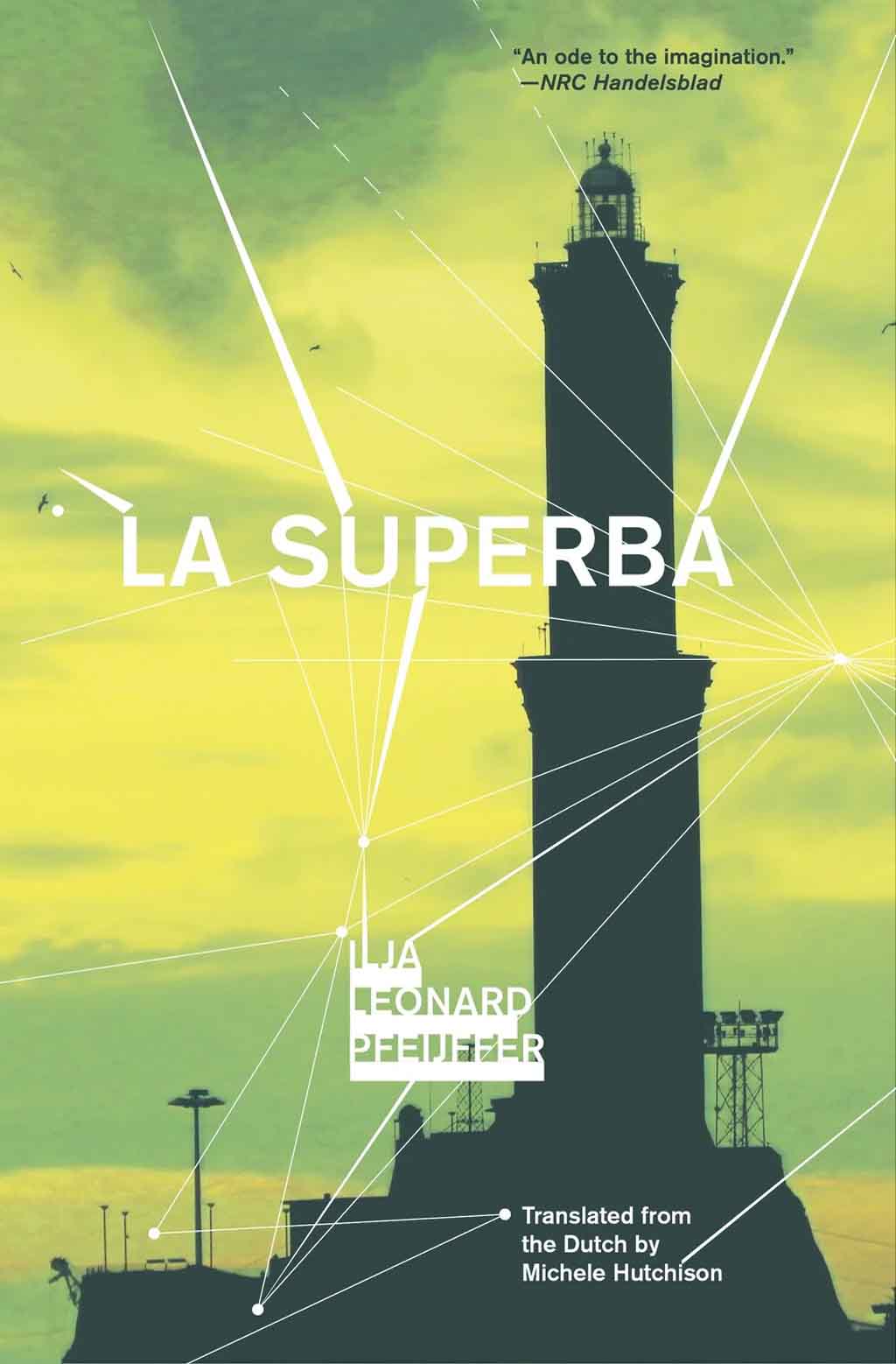
The winner of the highly acclaimed Dutch literature price is a masterpiece in the style of Rabelais and a pure joy to read. The legal and illegal migration is the focal point of this novel set in Genova about a writer nick named “La Superba” who falls for a trap leading him astray.
You can purchase the book by following this link:
https://www.barnesandnoble.com/w/la-superba-ilja-leonard-pfeijffer/1121758437
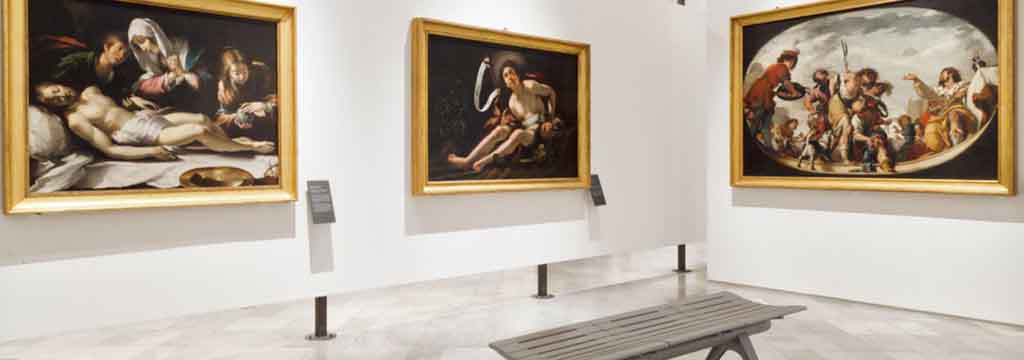
Genova and surroundings have plenty of interesting exhibitions and museums to offer. There are of course the large exhibitions in the Palazzo Ducale and in the two National Galleries in the Strada Nuova. But there is so much more art and culture to be found in Genova.
Wolfsoniana – “Bridges and Moorings”
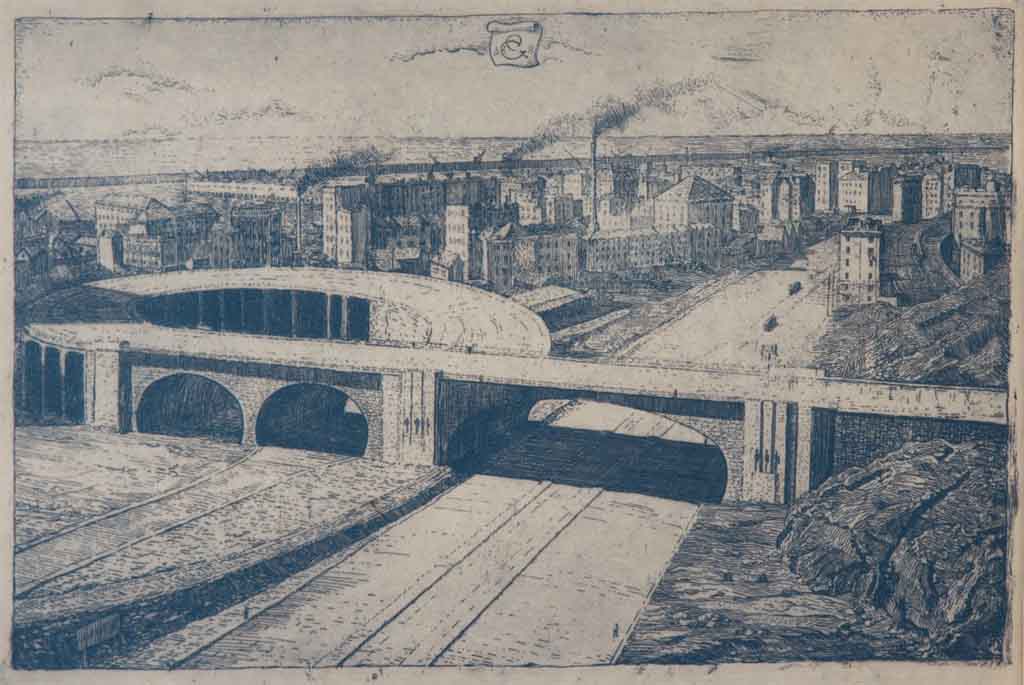
In the magical Nervi Park, a green oasis with views across the sea lies Wolfsoniana displaying art of the 20th century. The exhibition “Bridges and Moorings” will be on display until the 19th May 2024. It deals with the Armano Brasini project for the bridge over the street of Messina and was curated by Matteo Fochessati and Anna Vyazemtseva. The exhibition shows the plans the architect Armando Brasini drew for the bridge across the street of Messina. Brasini worked on these plans from 1955 to 1963. The plans together with a large collection of artistic drawings and documents are being shown. So far the bridge, which was designed to connect Sicily with the Italian Peninsular has never been built. The start of the building work has been moved back time and again and even abandoned for lack of financial means to create this bridge, 3660 m long, 399 m high and 60 m wide. In 2023 the project came to light again and the work is scheduled to start in 20024.
For more information follow this link:
https://palazzoducale.genova.it/ponti-e-pontili/
Museo d’Arte Orientale Chiossone – Chiossone and his Japan.
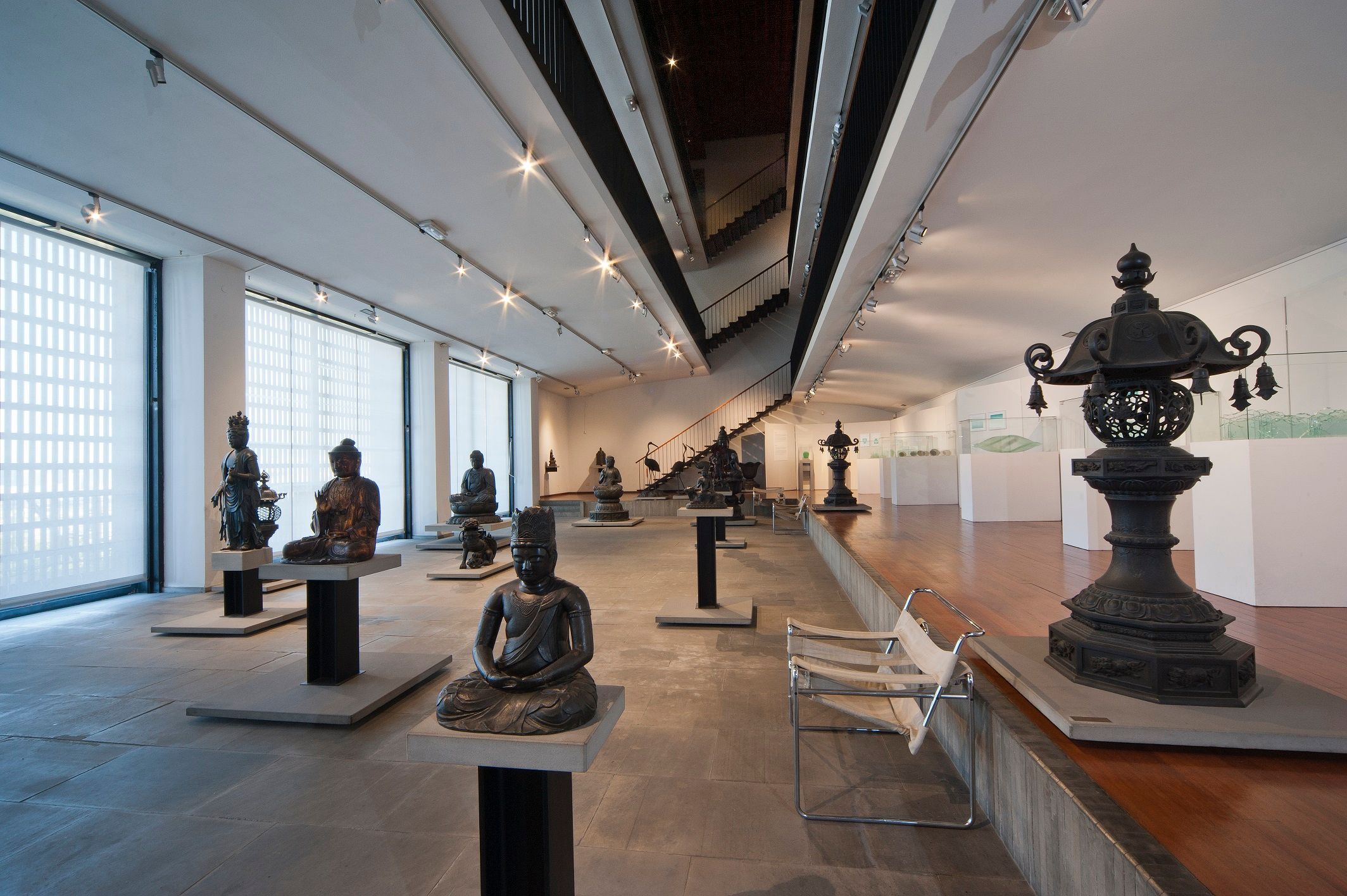
Right in the heart of the city lies the park of Villetta di Negro with the Museo d’Arte Orientale Chiossone. Until 14th January 2024 it shows the exhibition “Chiossone and his Japan”. It is dedicated to Edoardo Chiossone and reveals his life and the historic events that led to creating the most prominent museum for Japanese Art in Italy. There are masterpieces of the Japanese art history, paintings, wood carvings, porcelain and bronze statues on display.
For more information follow this link:
https://www.museidigenova.it/it/chiossone-e-il-suo-giappone
Castello D’Albertis – “La forma del vento”
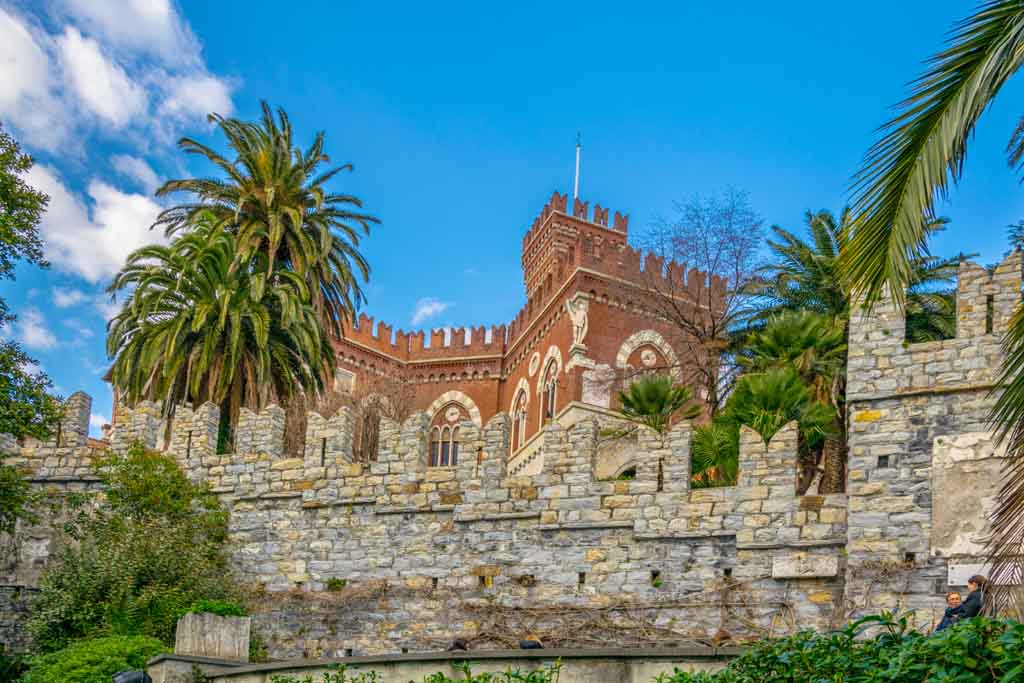
The D’Albertis castle is worth a visit for its breathtaking views over the sea and the port of Genova alone. Until the 28th January the exhibition “The Shape of Wind” – Gliding and Paragliding in the Japanese Tradition” can be visited at the museum. You will discover the fascinating thousand year history of the Japanese art of gliding and paragliding.
For more information follow this link:
https://www.museidigenova.it/it/la-forma-del-vento
Villa Croce – “Visibilia”
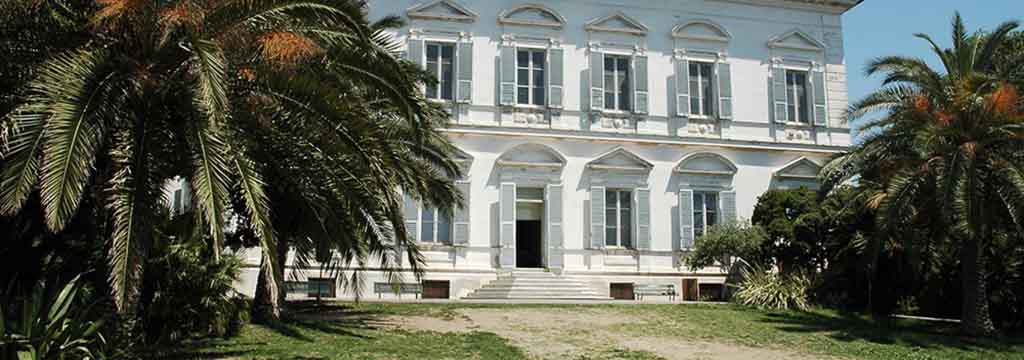
The Villa Croce is situated in the inner city park in the town part Carignano with views over the sea. It is an important museum for contemporary art in Genova. The exhibition “Visibilia” runs until the 8th January 2024 and shows a collection of works of art carefully selected by each artist to tell a story. The artworks cover a wide spectrum of visual explorations and range from digital and non-digital photography to installations using different materials. Some thirty artists are on display, curated by Isabella Puliafito.
For more information on the exhibition follow this link:
https://www.museidigenova.it/it/visibilia







